Big Bay, Michigan
Big Bay is a small unincorporated community perched between the rugged shores of Lake Superior and the quaint 1,800-acre Lake Independence. The town is a year-round destination for outdoorsy folk due to its proximity to hiking trails, waterfalls, and other scenic sites.
In the winter, Big Bay averages over 125 inches of snowfall and is a popular destination for snowshoeing, cross-country skiing, and snowmobiling. The town has a long and storied history filled with exciting tales and unique people. Without that history, odds are, the town wouldn’t be what it is today.
We created this map to help depict the town to those who haven’t been there, and the goal of this piece is to scratch the surface of the detailed history of Big Bay. If you click on any of the markers on the map, the location's name will pop up. If you want to learn more about that particular place, click the title, and you’ll be directed further down the page to learn more about that place. Or, just scroll down! As we continue to learn more about Big Bay, we’ll update this page.
Let’s get started!
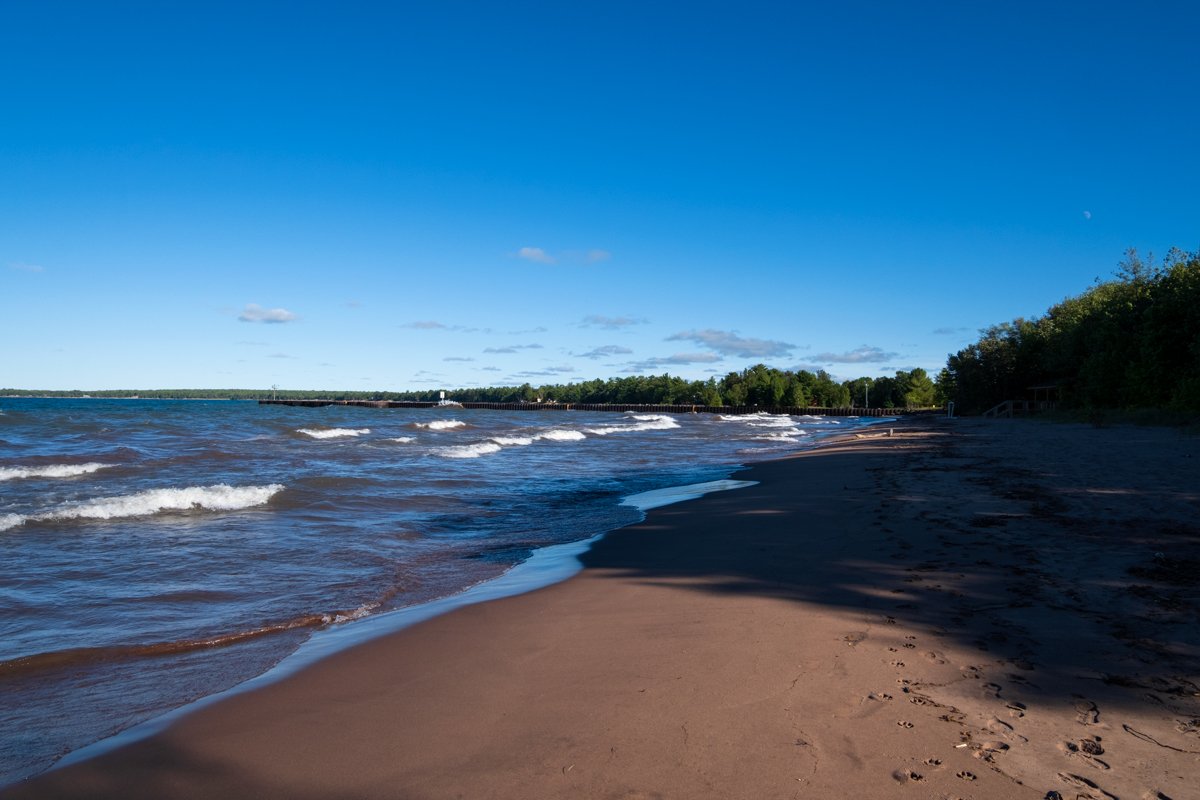
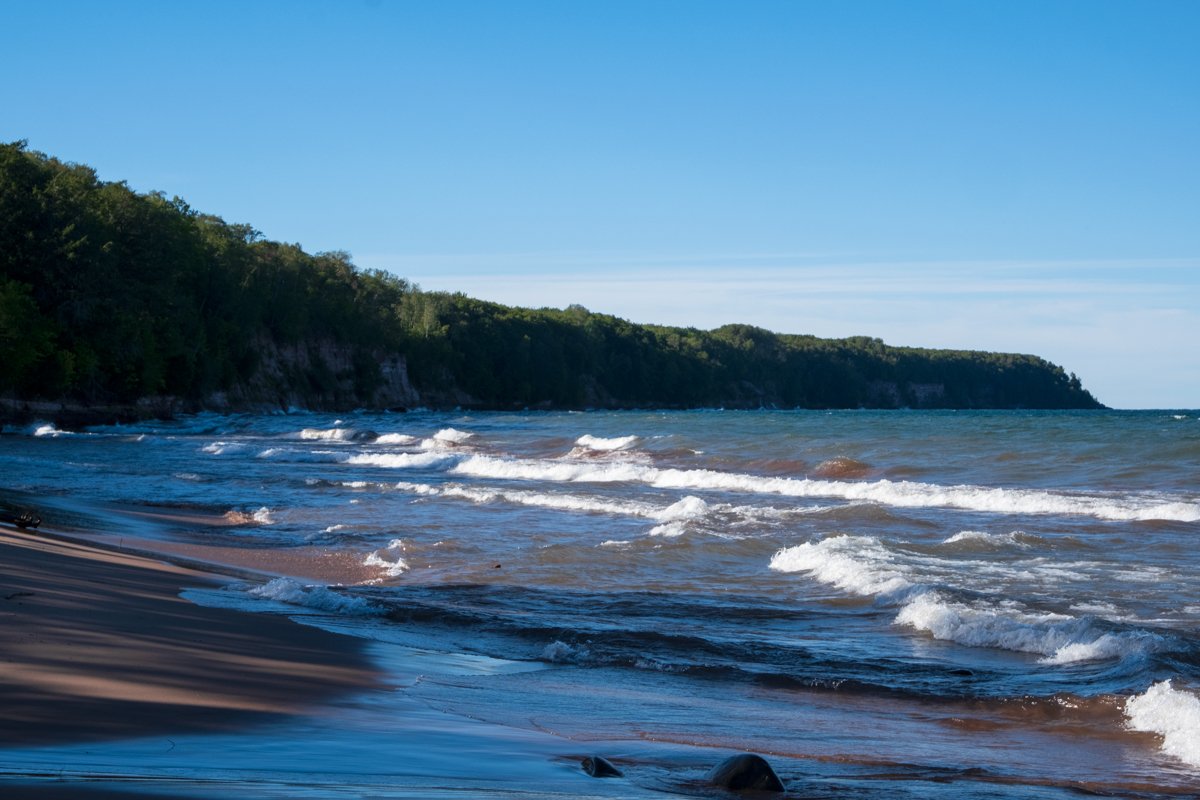
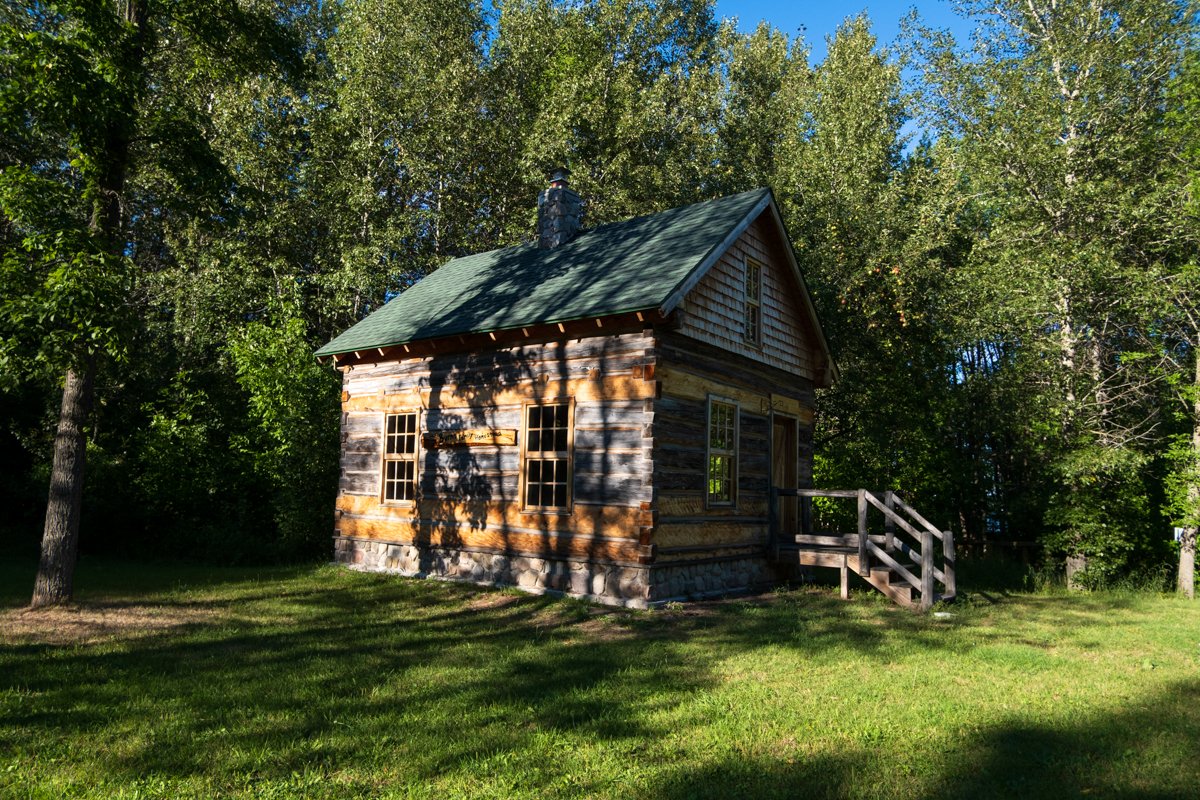
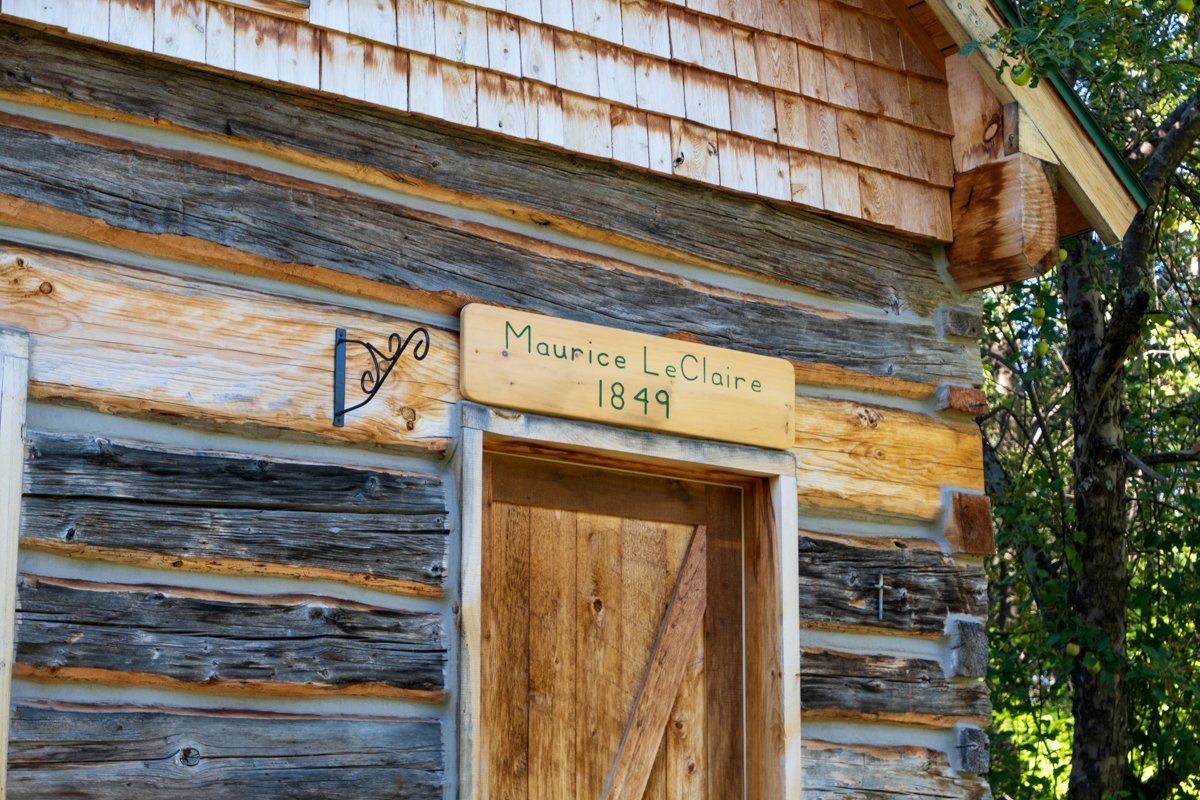


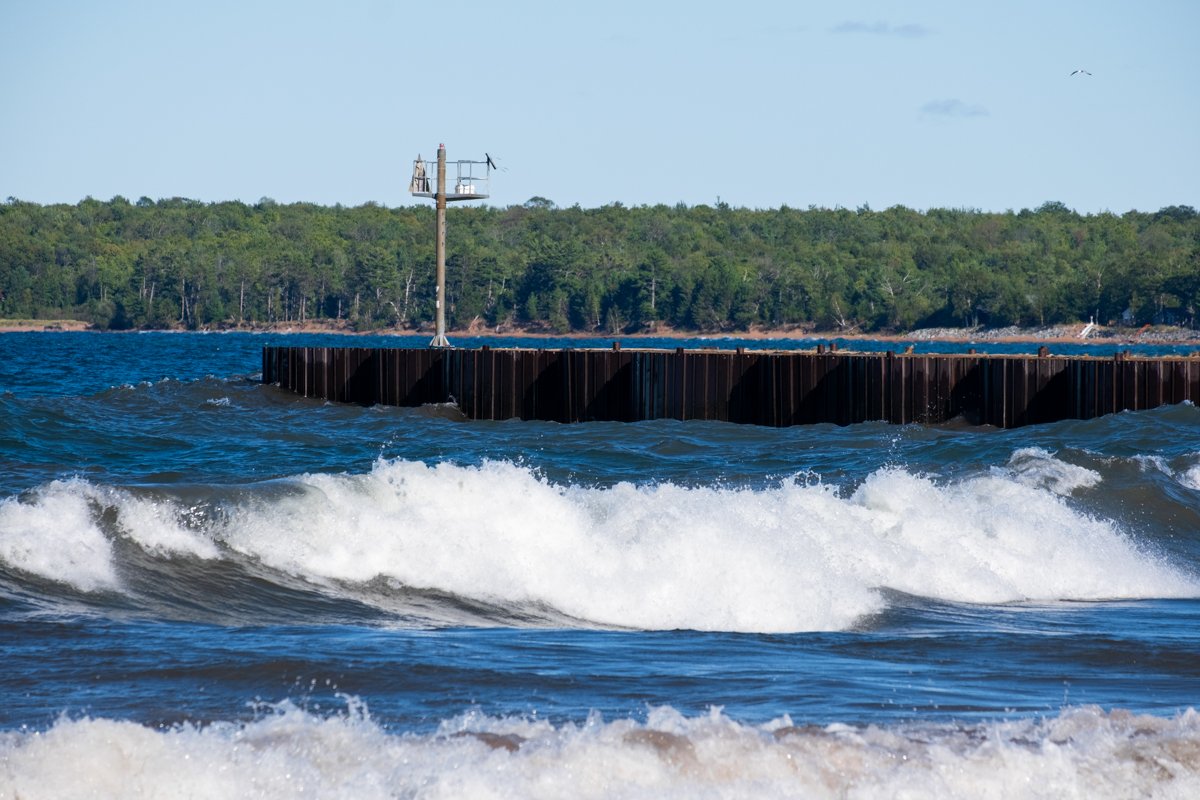
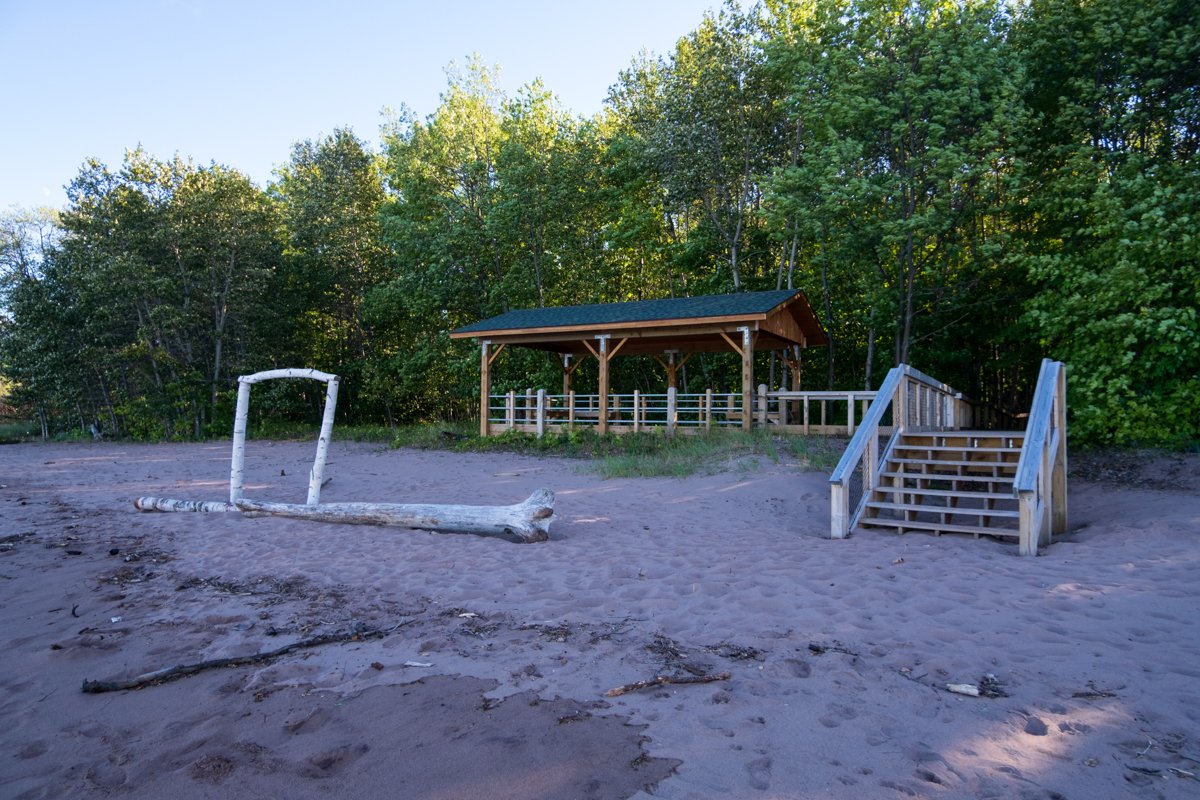
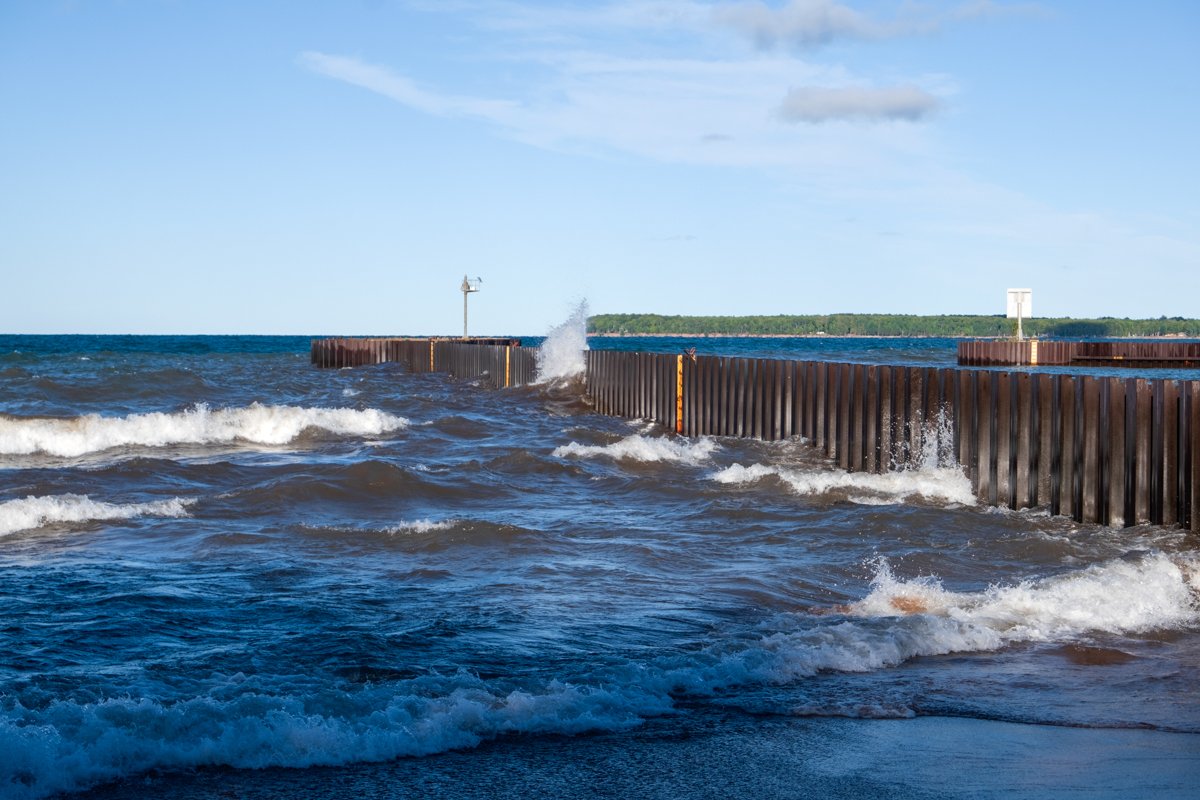
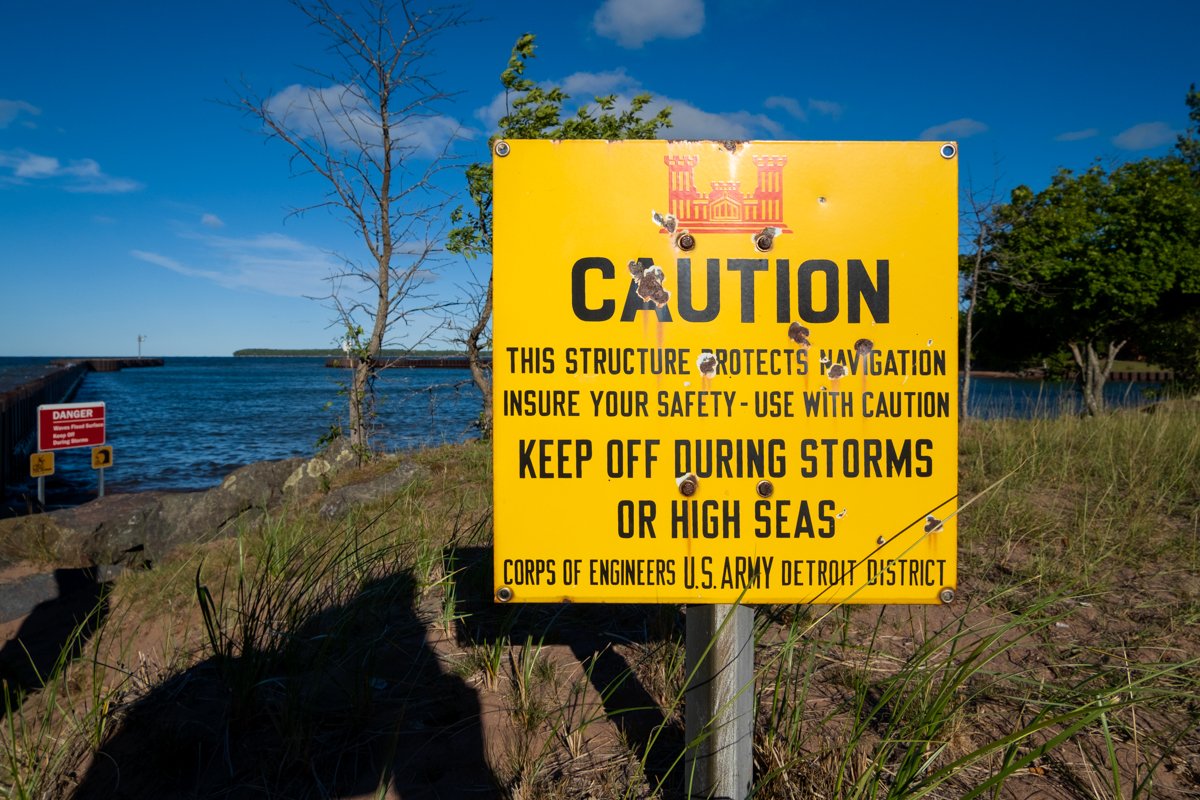
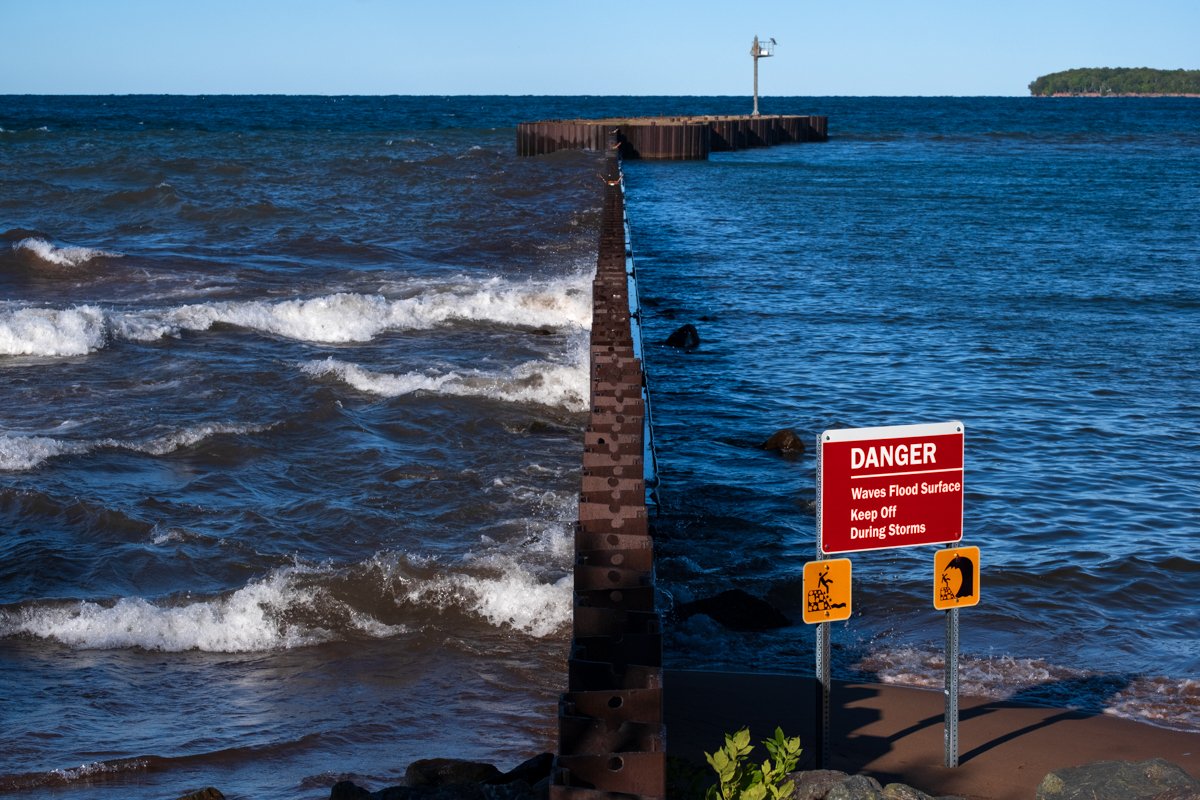
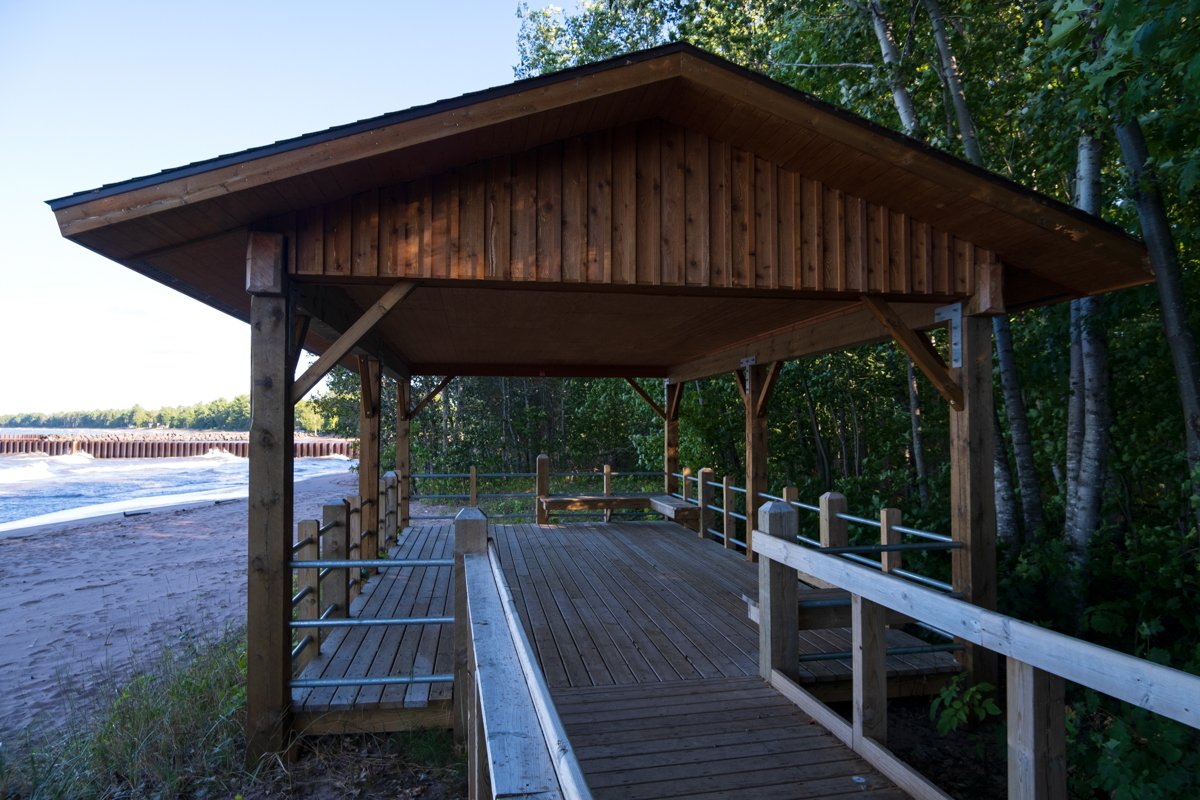
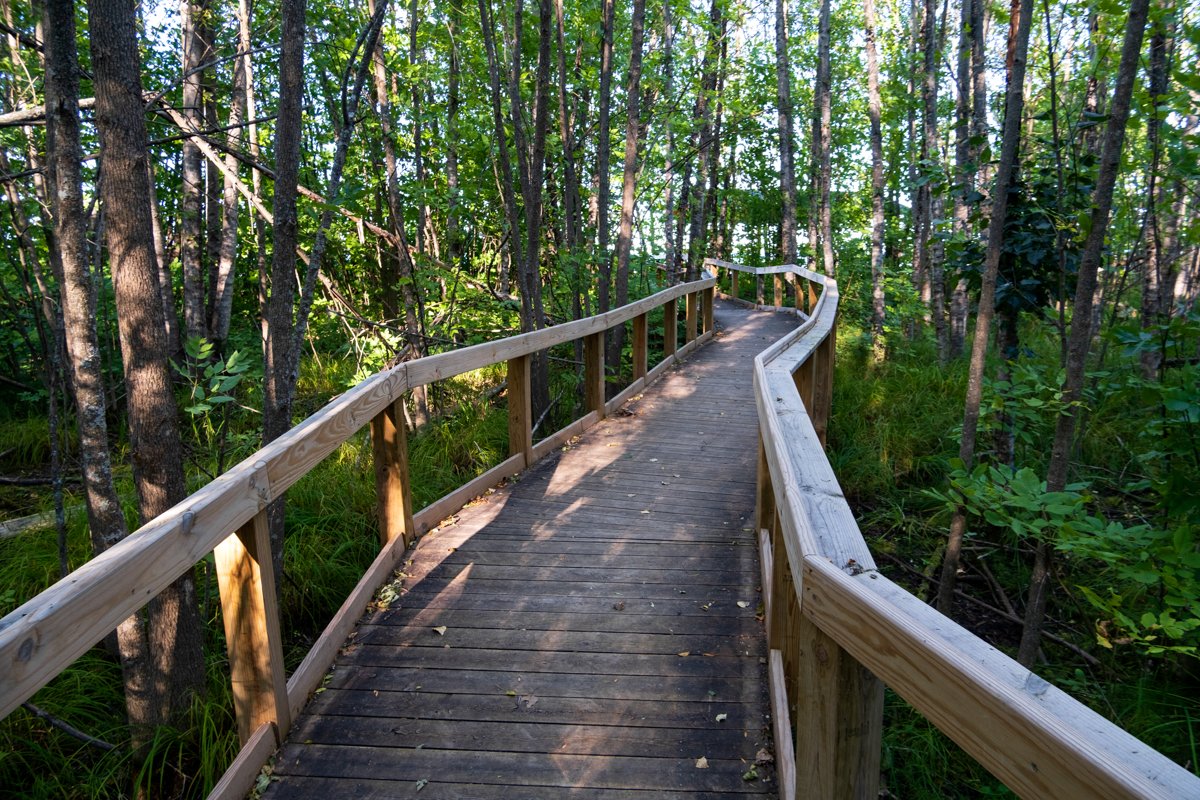
The first round of Big Bay’s history is closely intertwined with two men. Maurice LeClaire is the first known person to live in Big Bay, and his date of arrival is unknown. What is known is that he was born around 1839, and sometime around 1860 he built a log cabin a short jaunt away from Lake Superior. We don’t know much about those early days, but LeClaire was expected to be a Native American with potential French heritage. His wife was also Native American, and they had a few children who lived with them in the cabin. He did not own the land, but at the time, Big Bay was a dense wilderness.
In the 1880s, Charles Burns would arrive in Big Bay. He was Scottish by way of Canada and would marry one of LeClaire’s daughters. It’s thought that she passed away or moved on, and Burns married her younger sister, LeClaire’s second daughter. Burns may have arrived in the area to work in the lumbering industry, but census records show that he was a fisherman at some time.
At one point or another, each of these people lived within the cabin LeClaire built in the 1860s. LeClaire built a larger cabin in the 1870s, but we’re not certain which of these two is the cabin that was refurbished and remains at Burns Landing Historical Park. Read more about visiting that park here.
Big Bay would technically be founded in 1875 as the lumbering industry crept northward from Marquette, but LeClaire had already been living here for probably a decade or more. The town would see a lumbering boom in the 1880s, bringing men like Burns to the town, and larger companies like Brunswick, too.
Brunswick was founded in 1845 by Swiss immigrant John Moses Brunswick. The company got its start by producing some of the nicest billiards tables in the United States. The company would eventually expand to produce bowling pins, car tires, record players, and other wood products.
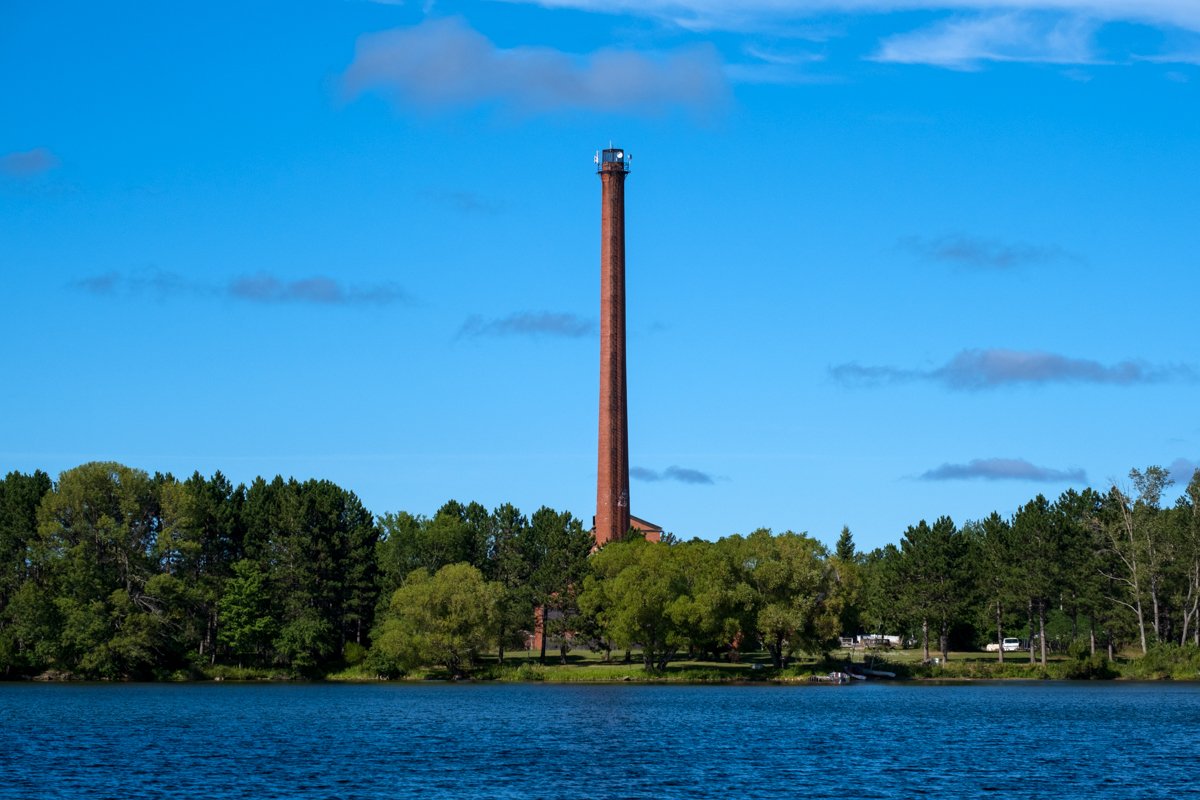
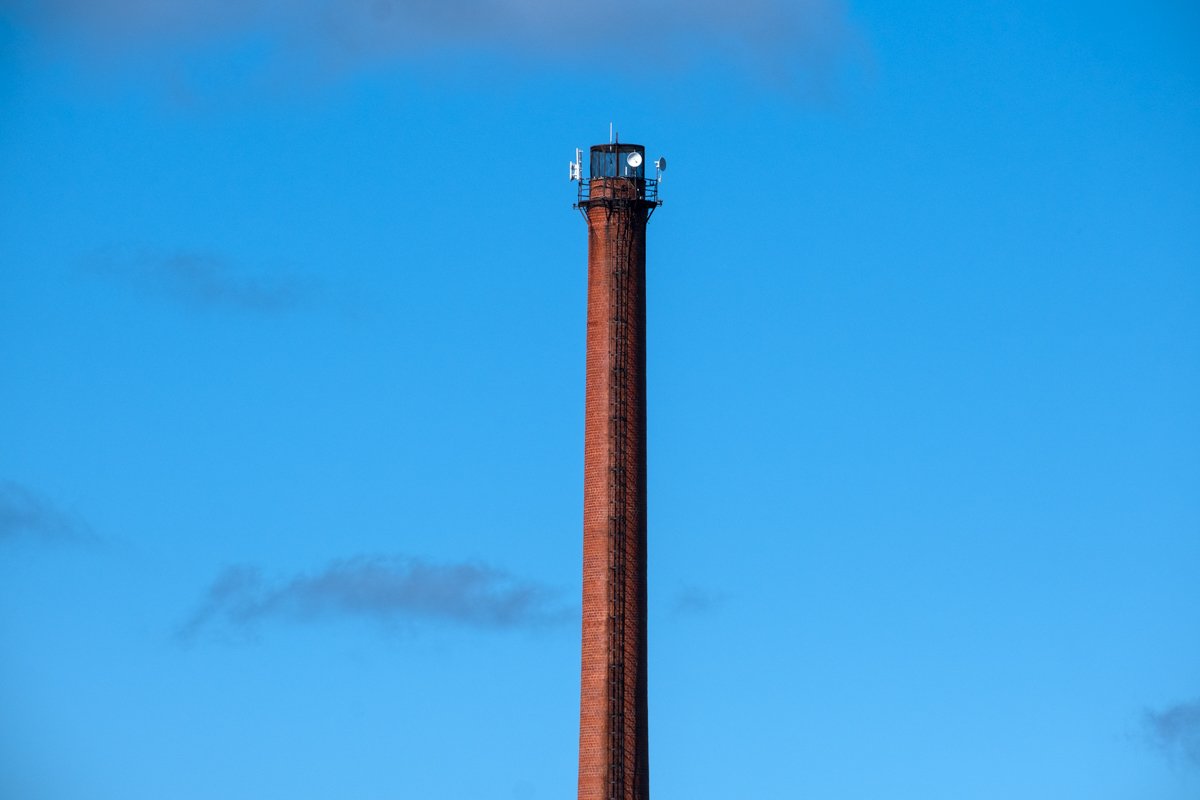
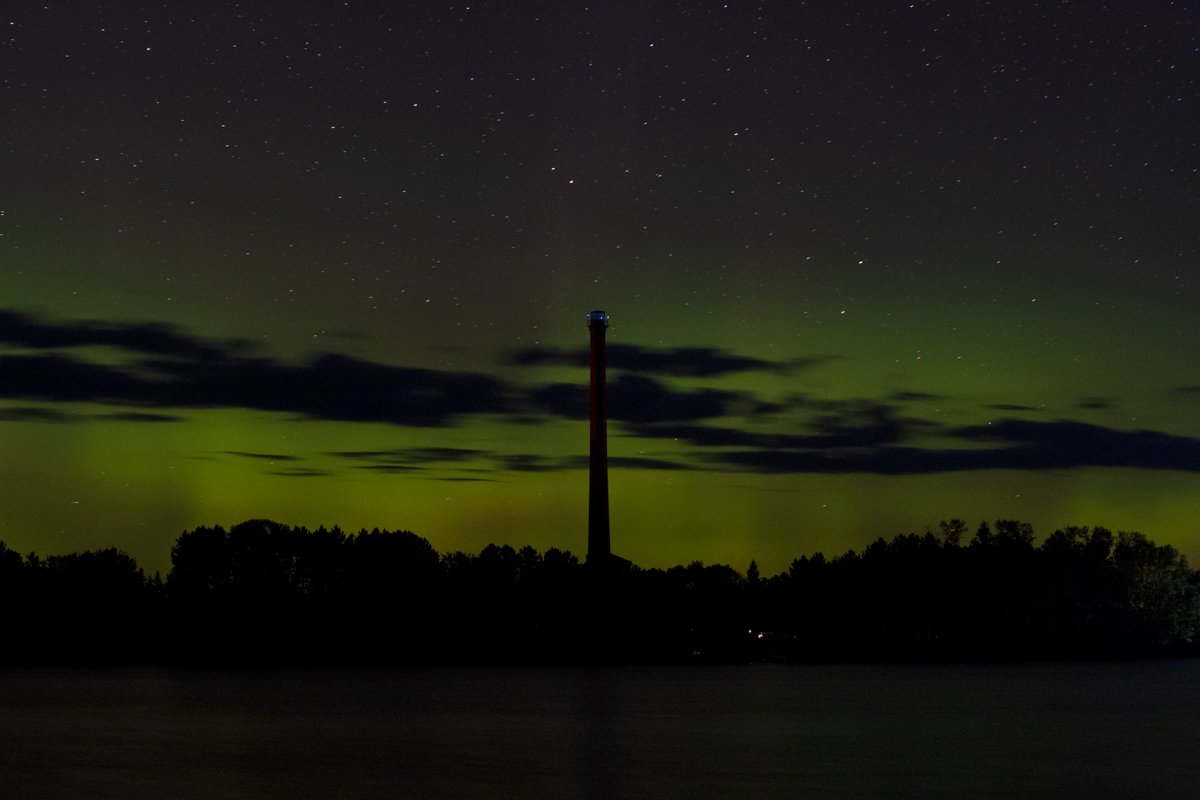
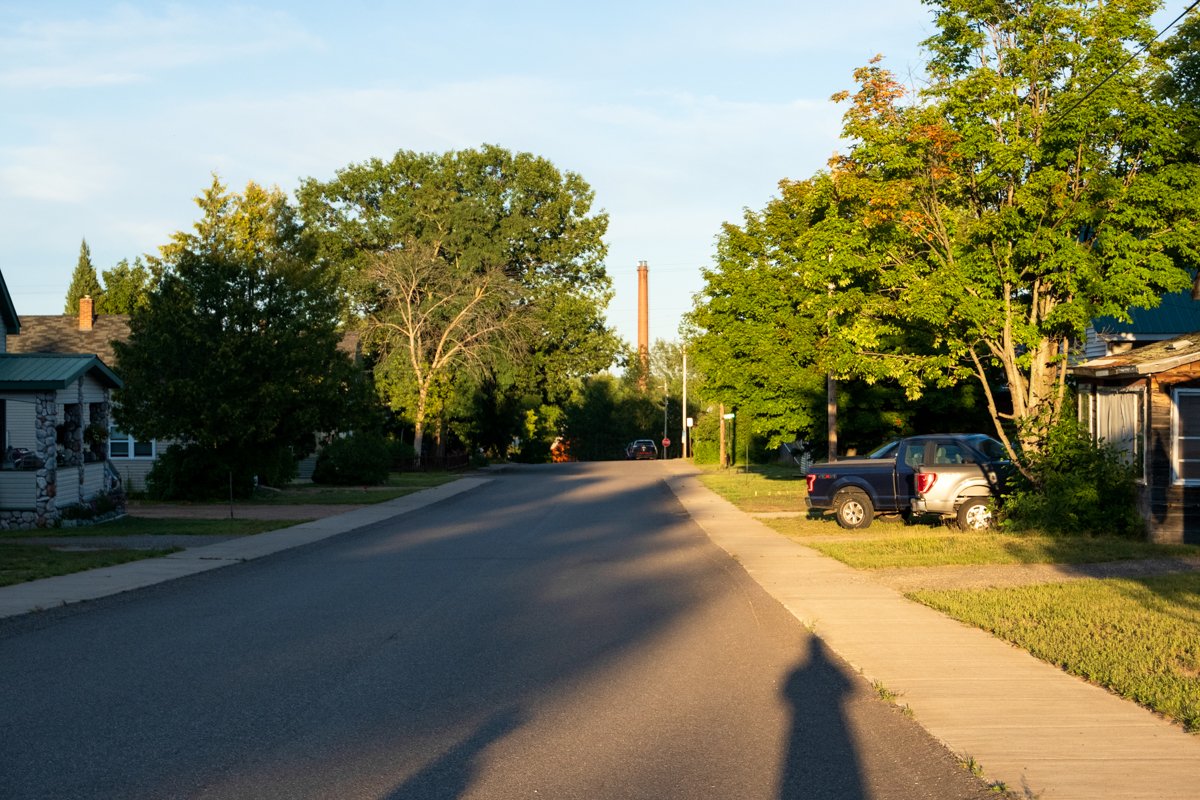
Brunswick’s operations in Big Bay were enlarged when they built a sawmill in town sometime around 1903. Several products were crafted at this mill, but their largest export was bowling pins. It has been reported that at one time, 90% of the world’s bowling pins were produced at the Brunswick Lumber Company Sawmill in Big Bay, Michigan. Most of the pins manufactured at the mill came from hard maple trees. The mill was located on Lake Independence, which is a natural lake, but was dammed around 1913.
Lake Independence existed before the dam, but the levels varied more before its construction. There were numerous mills on the lake, but it seems that the Brunswick Mill was the largest. Lake Independence was once known for excellent fishing—and the largest Yellow Perch ever caught in Michigan was landed here by George Slutter from Big Bay. The fish was 21 inches and nearly four pounds, which is hard to fathom. You can read more about fishing in Big Bay in our post on Perkins Park & Campground.
Although it has not been confirmed, there are a lot of arrows pointing to Big Bay being a Brunswick company town. There were other businesses in the area, but Brunswick appears to have been the largest. The company issued coupons to pay their workers that could be spent at the company-owned store in town, they had their own baseball team, and it is thought that the manufacturer employed a large number of people in town. At some point, a power plant was erected, but we haven’t come across much information on that.
The town of Big Bay was much more lively in the roaring twenties than it is today. An athletic club acted as a social outlet for local citizens, and there was a movie house to see films, a hospital to tend to the sick and injured from the lumbering industry, and multiple places of worship. It’s estimated that the town’s population crept near 1,000 people at one point. Most of the people in Big Bay worked in the lumbering industry or related fields.
Despite producing the world’s bowling pins for nearly three decades, the Brunswick Lumber Company Sawmill closed its doors in 1932. It’s unclear what happened to the mill directly after this period—it may have been sold and used by another company, or it may have sat vacant.
Big Bay Point juts out into Lake Superior northeast of downtown Big Bay and Lake Independence. The point rises on a rocky outcropping and many boats wrecked here before a light was constructed in 1896. The Big Bay Point Light featured a 3rd order fixed Fresnel lens, fog signal building, and keepers’ quarters. The lighthouse was automated in 1941 and was decommissioned in 1961. It was then sold to a private citizen, renovated, and resold again in 1979. At this point, the lighthouse was turned into a bed and breakfast, which still operates today.
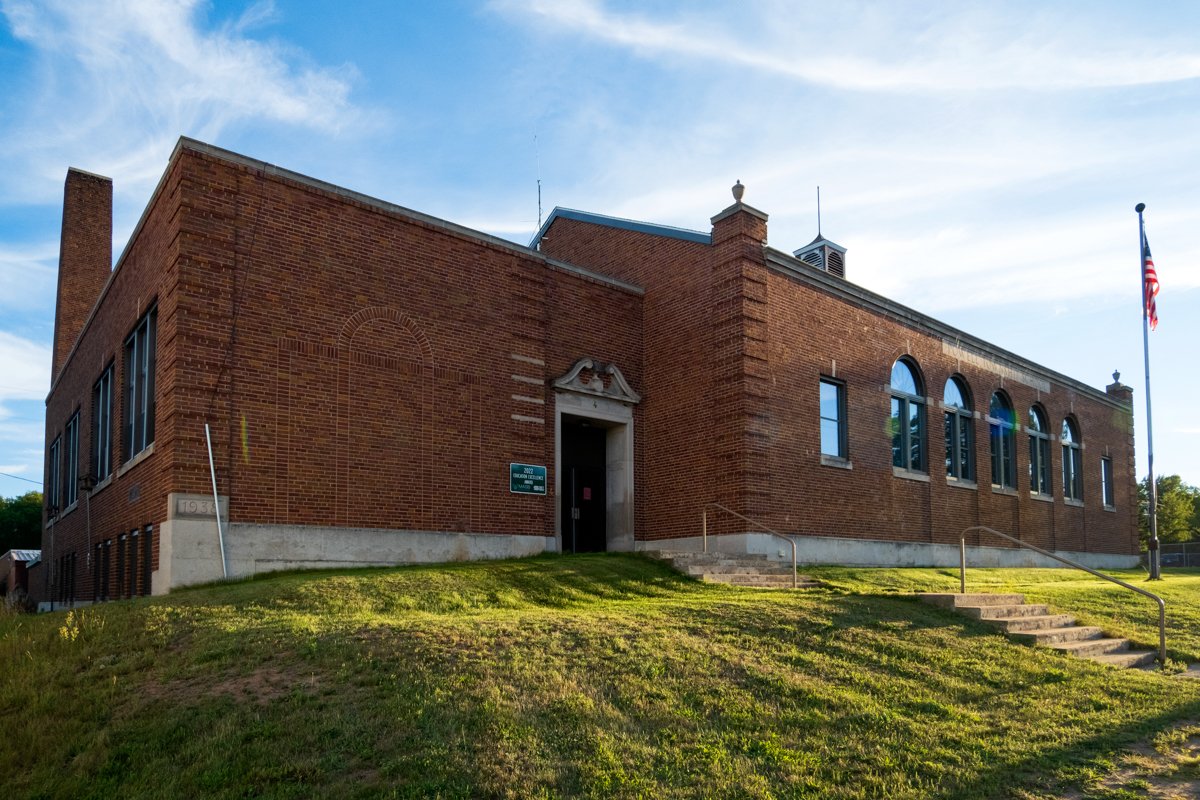
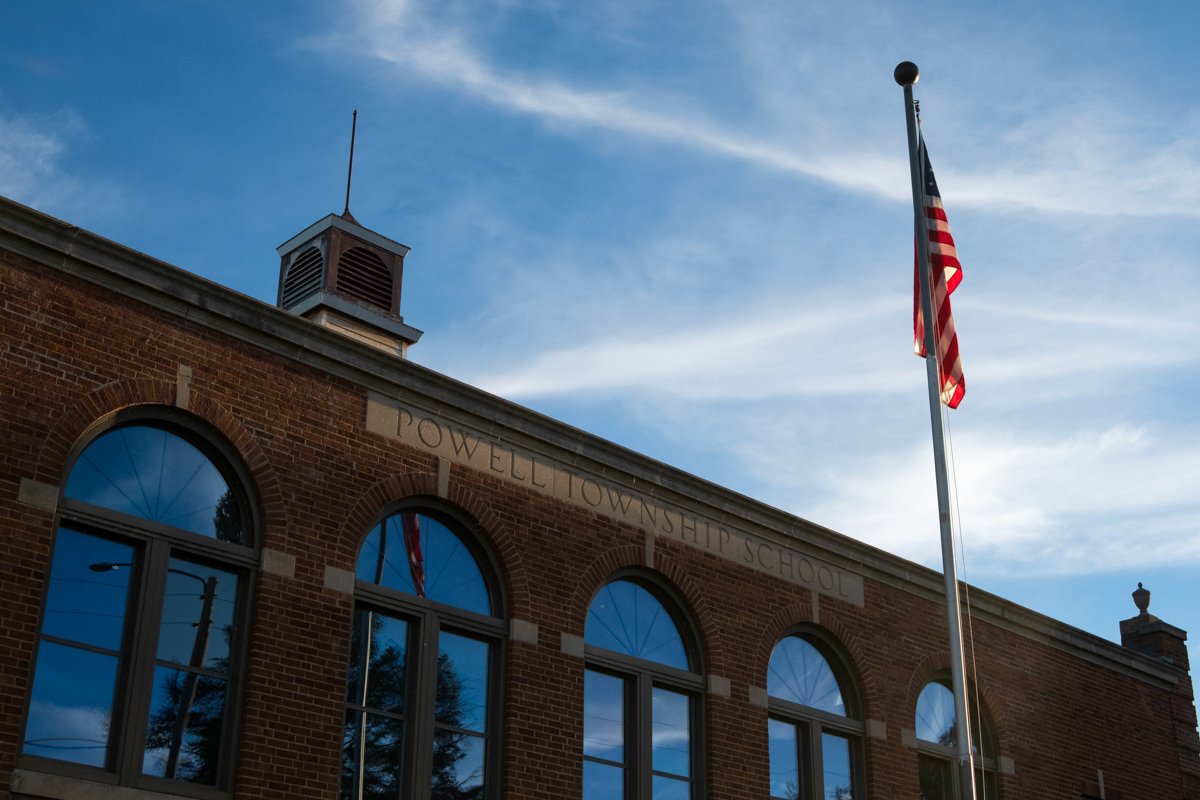
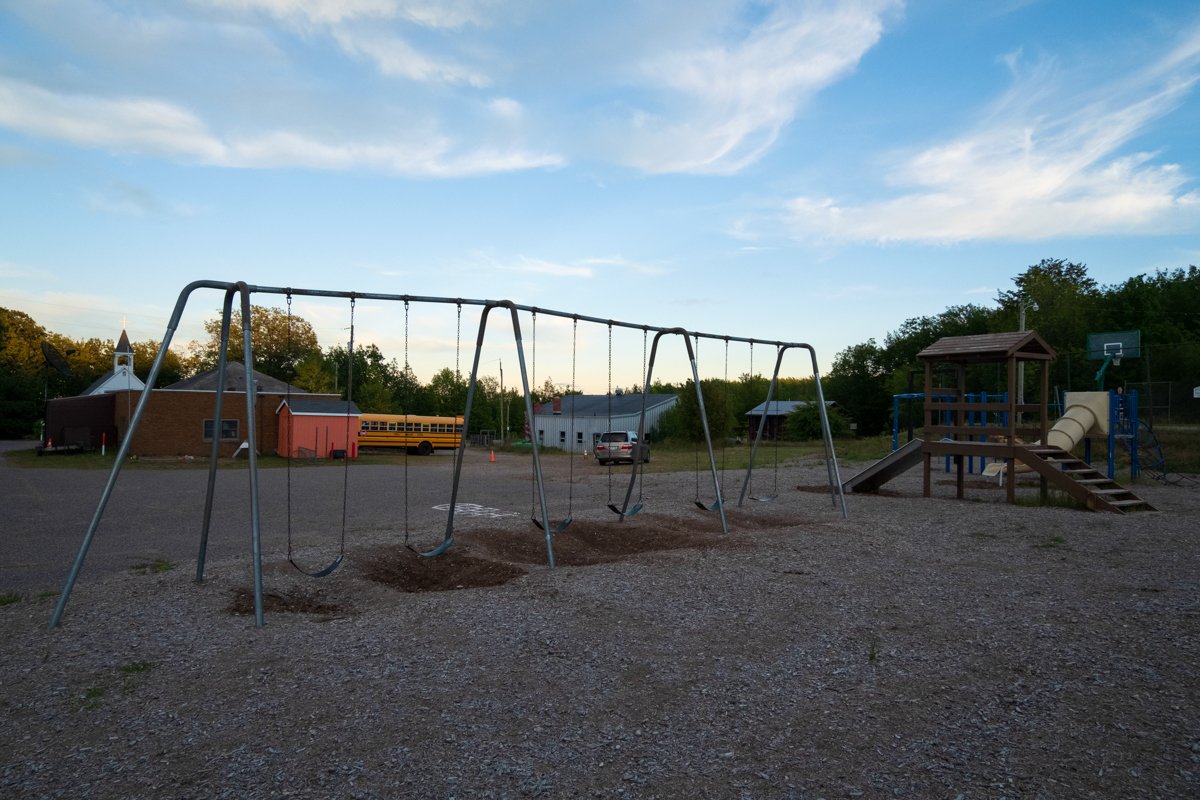

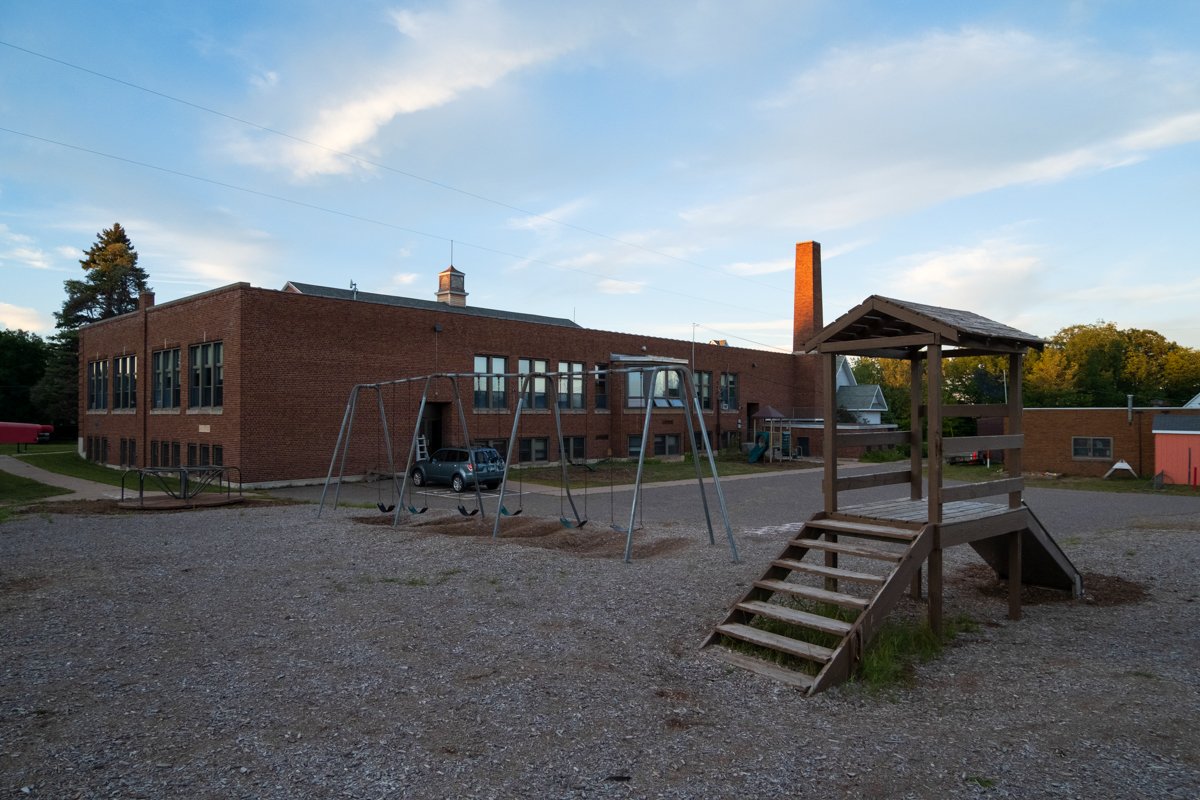
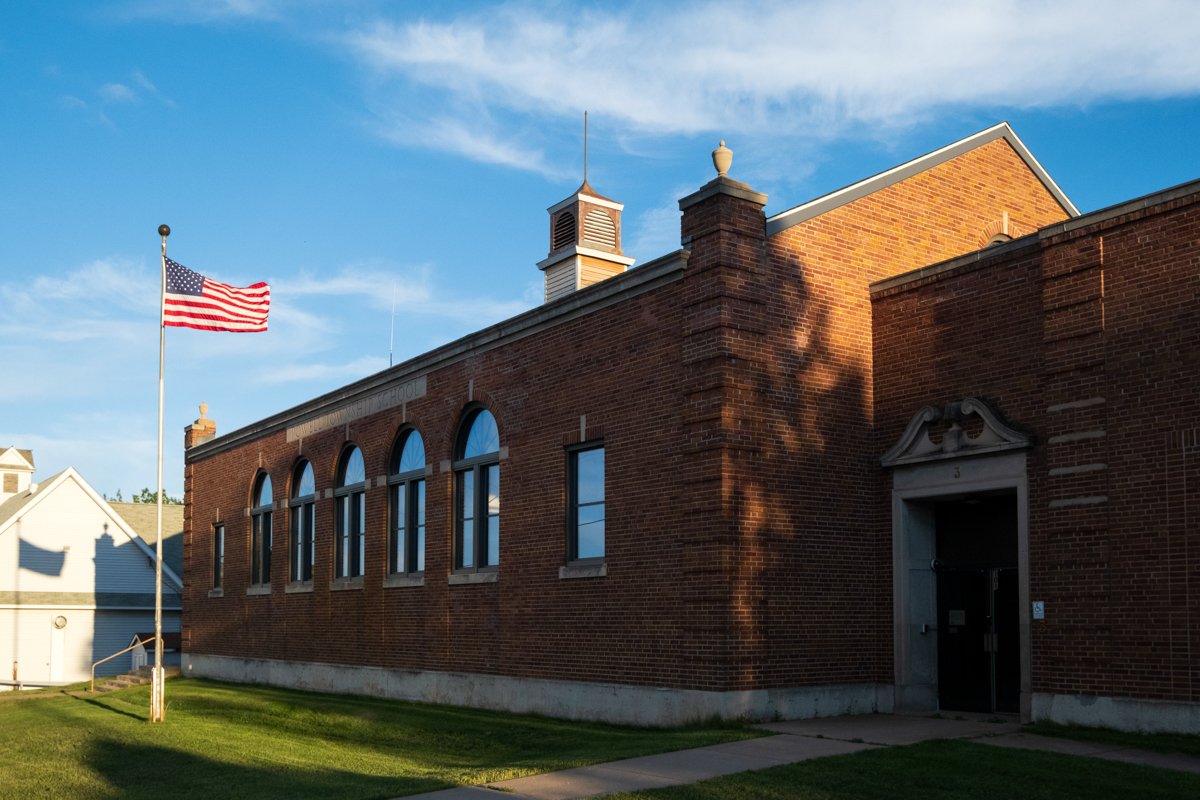
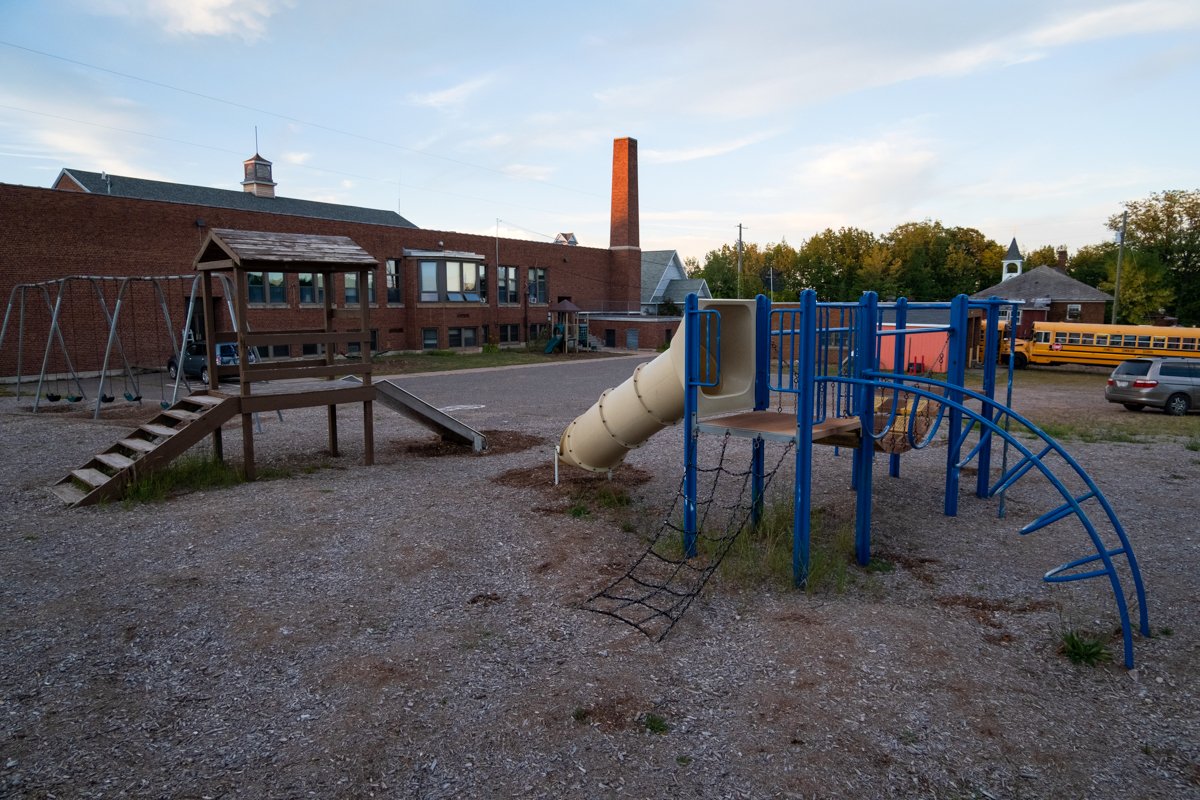
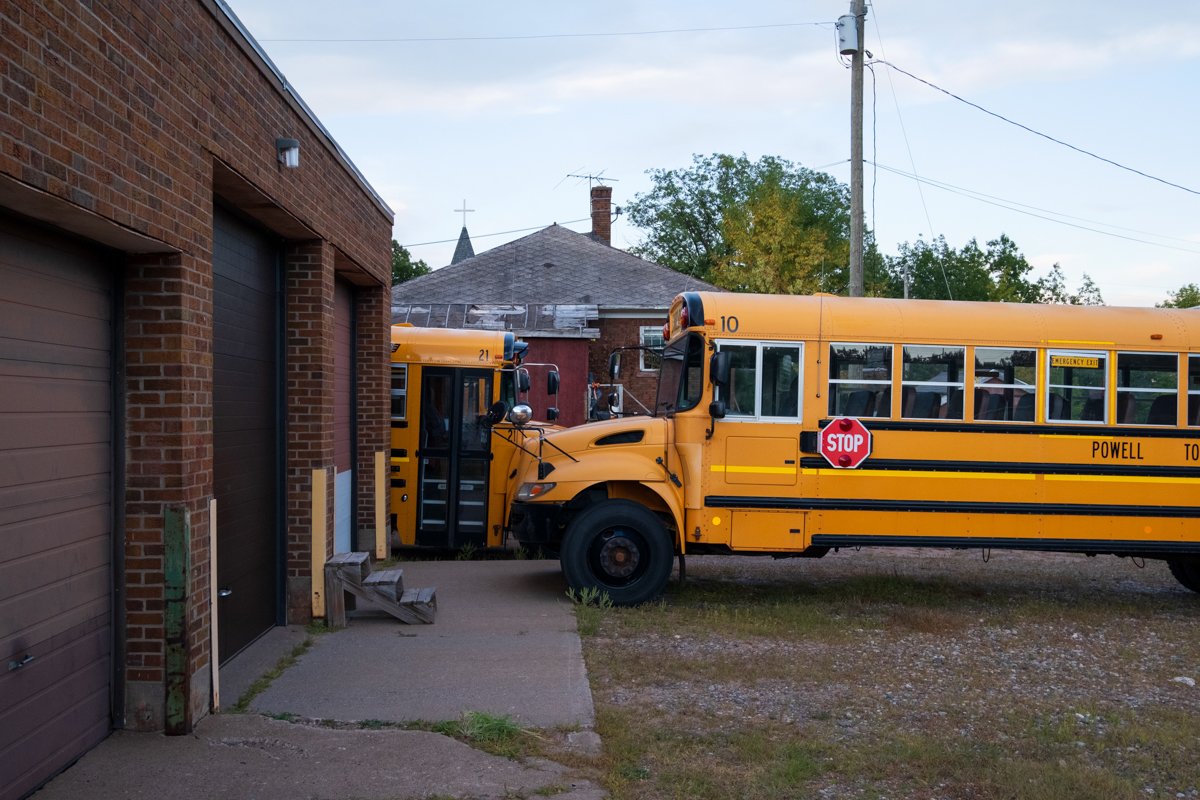
The Powell Township School District was founded sometime shortly after 1900. The original school building, called the Charles Burns School, was completed in 1914. It would later be destroyed by fire sometime around 1936. The Great Depression was still raging, and money was tight in Big Bay, so building a new school presented a problem.
The Public Works Administration built a new school in Big Bay to replace the lost one, and the project was completed in 1938. The Administration paid for just under half the total cost of the school. The PWA was responsible for building large-scale projects around the United States, whereas the WPA (Works Progress Administration) primarily focused on smaller builds.
Powell Township School services up to the eighth grade and has pre-K programs for local children. Upon graduation from Powell Township School, students are bussed to Negaunee High School to complete their education. Enrollment is typically between 40-50 students between Pre-K and 8th Grade.
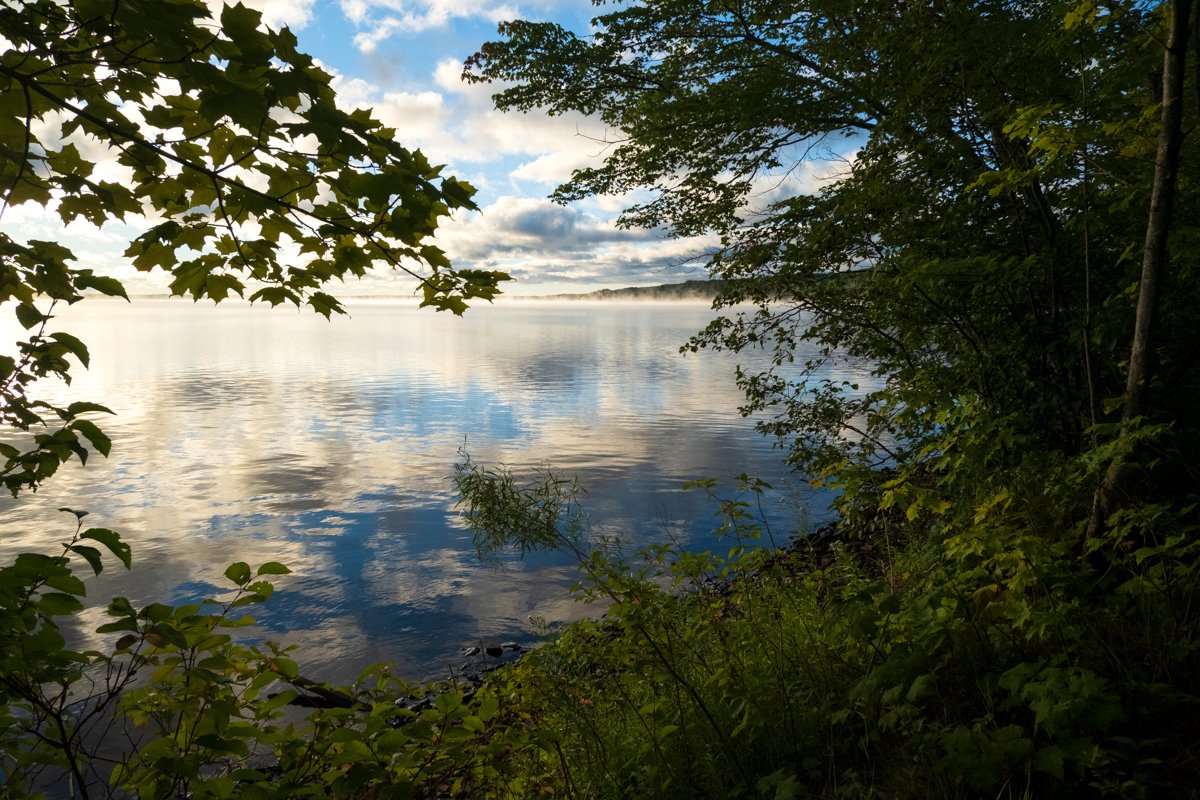
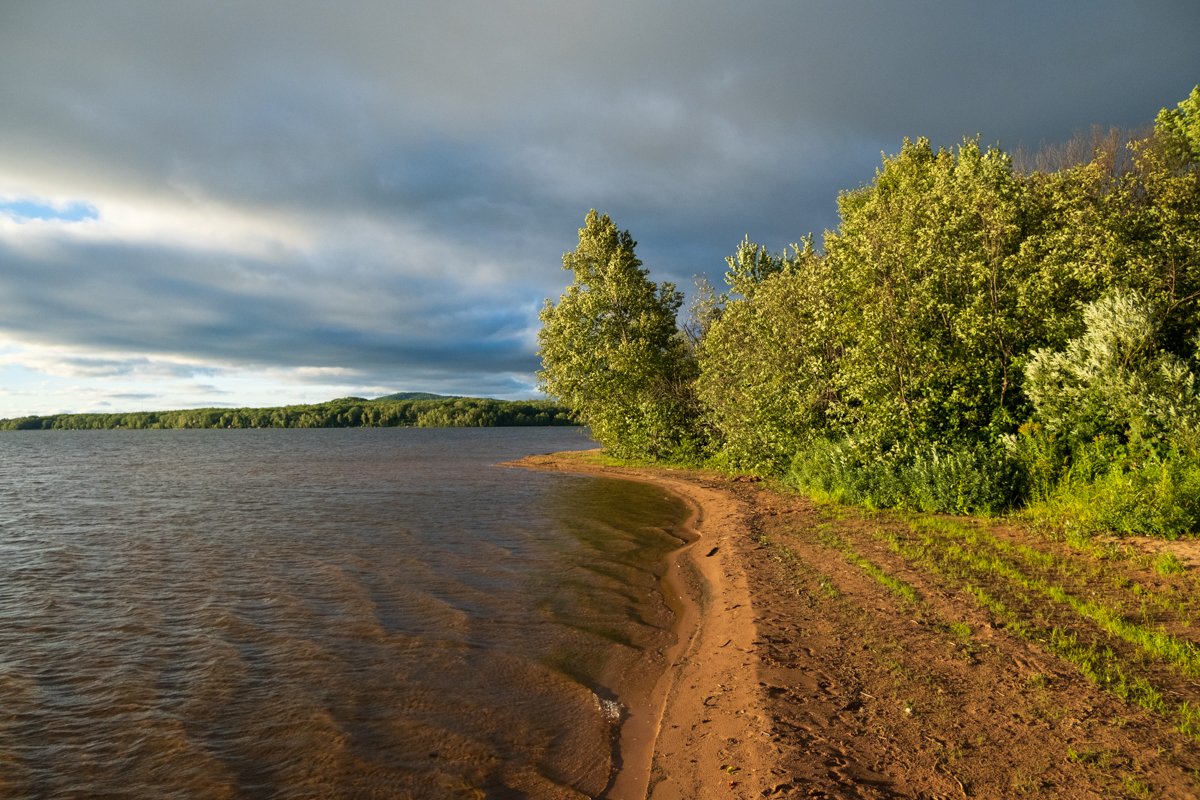
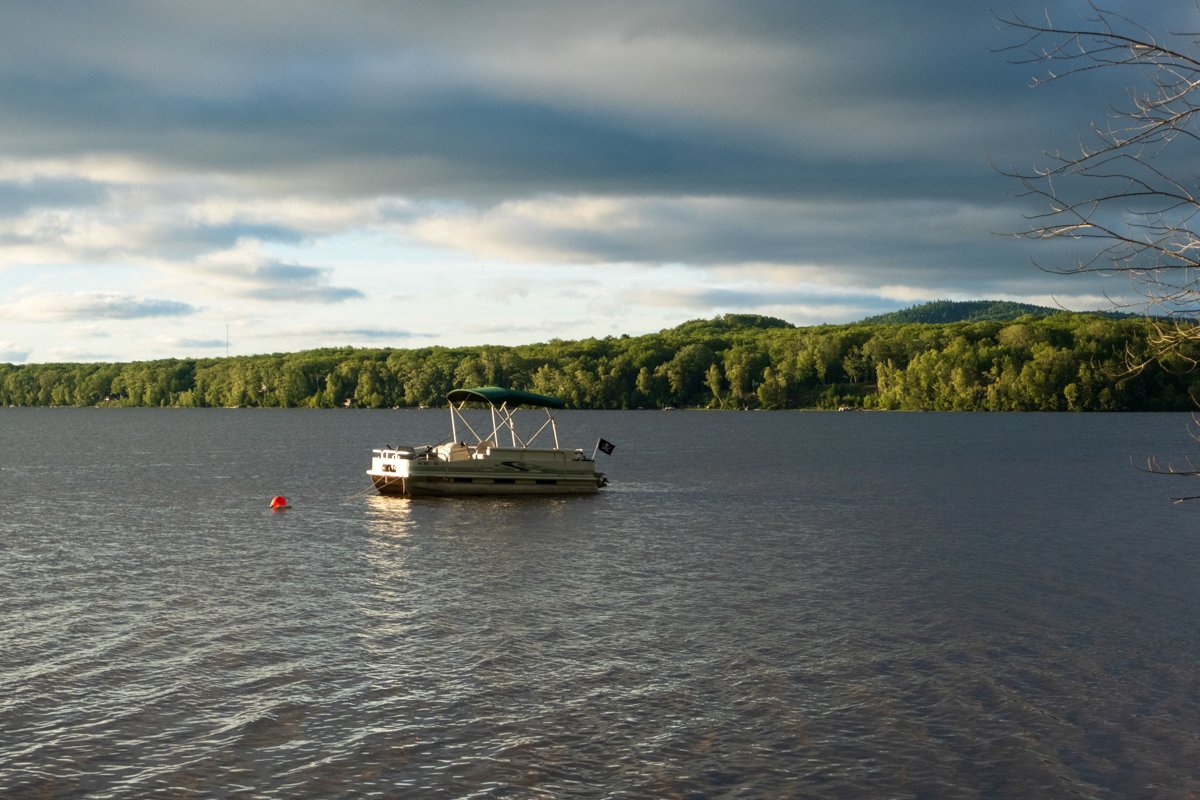
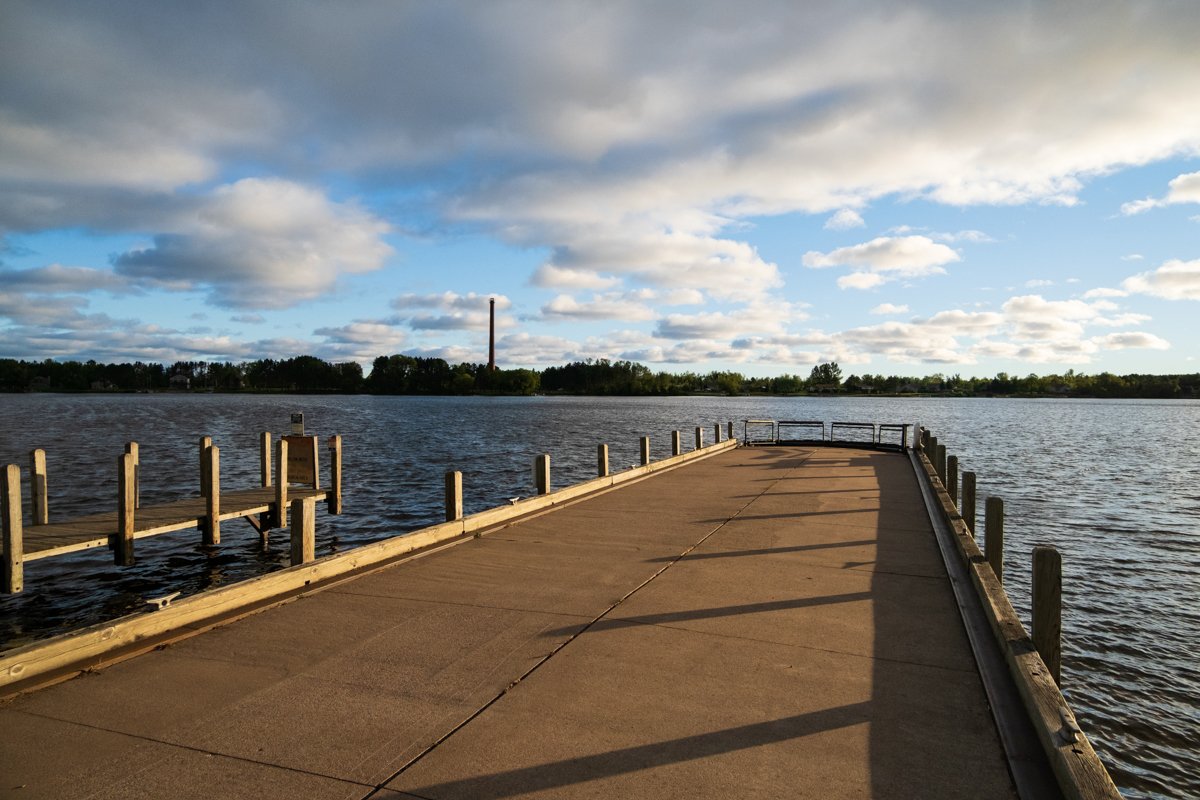

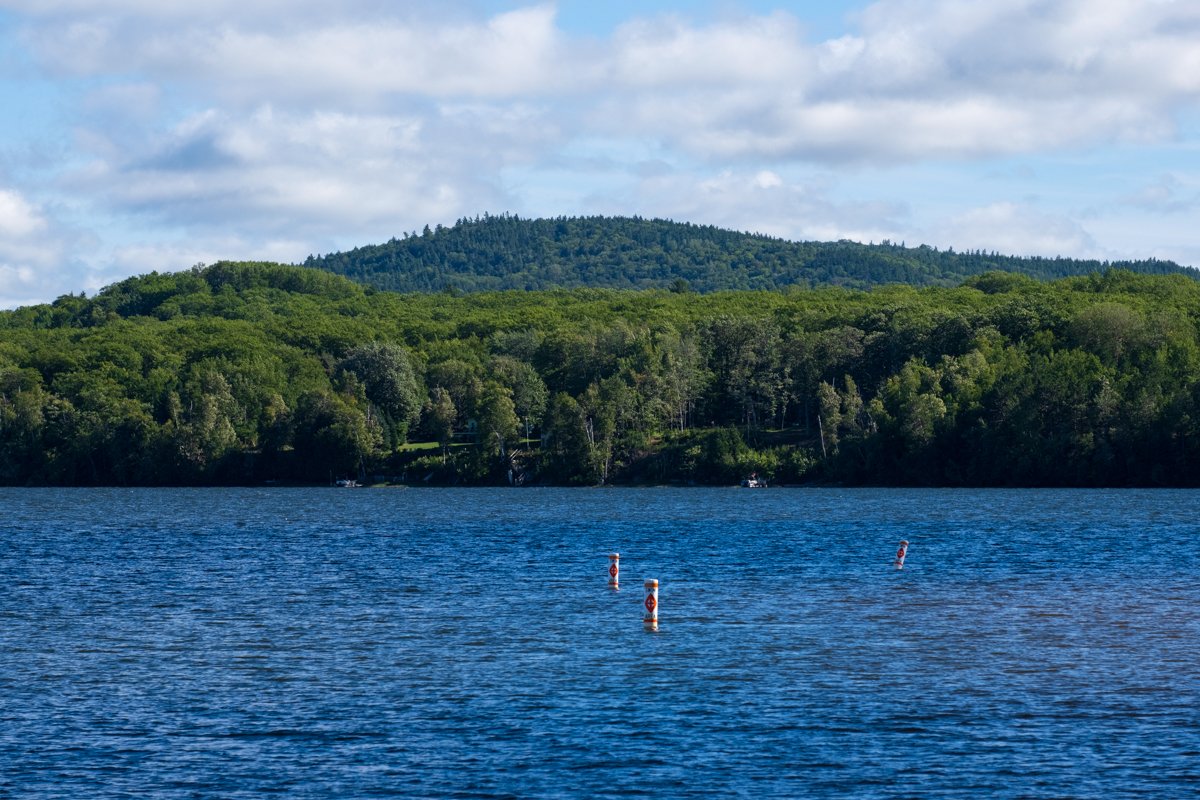

Four years after Brunswick closed the mill, they sold 6.11 acres of land on Lake Independence to Powell Township for a dollar. The sale stipulated that the land had to be used for a park—nothing else. Big Bay Tourist Park was born, and the rest was history. It quickly became a popular place for locals and outsiders alike to enjoy—and it was expanded and upgraded after Marquette County took it over. The park was eventually renamed Perkins Park and is still open today. It was named after Powell Township’s Supervisor Perkins. Read more about and see more photos from Perkins Park here.
One of the highlights of Big Bay Tourist Park is the view of the lake and the Brunswick Mill across the water. It rises like an arrow from the landscape and is the tallest manufactured structure for miles. Shortly after the advent of the park, one of the world’s wealthiest men purchased the mill in 1943 to mill wood for his vast automobile empire. Yup, you guessed it—Henry Ford.
Ford purchased the mill, power plant, and several buildings in Big Bay in 1943. At one point, the Ford Motor Company owned over 300,000 acres of land in the Upper Peninsula to chop down trees to continue churning out their then wooden-bodied automobiles. In addition to supplying lumber for the company’s cars, Ford executives could use some of the buildings to take holidays.
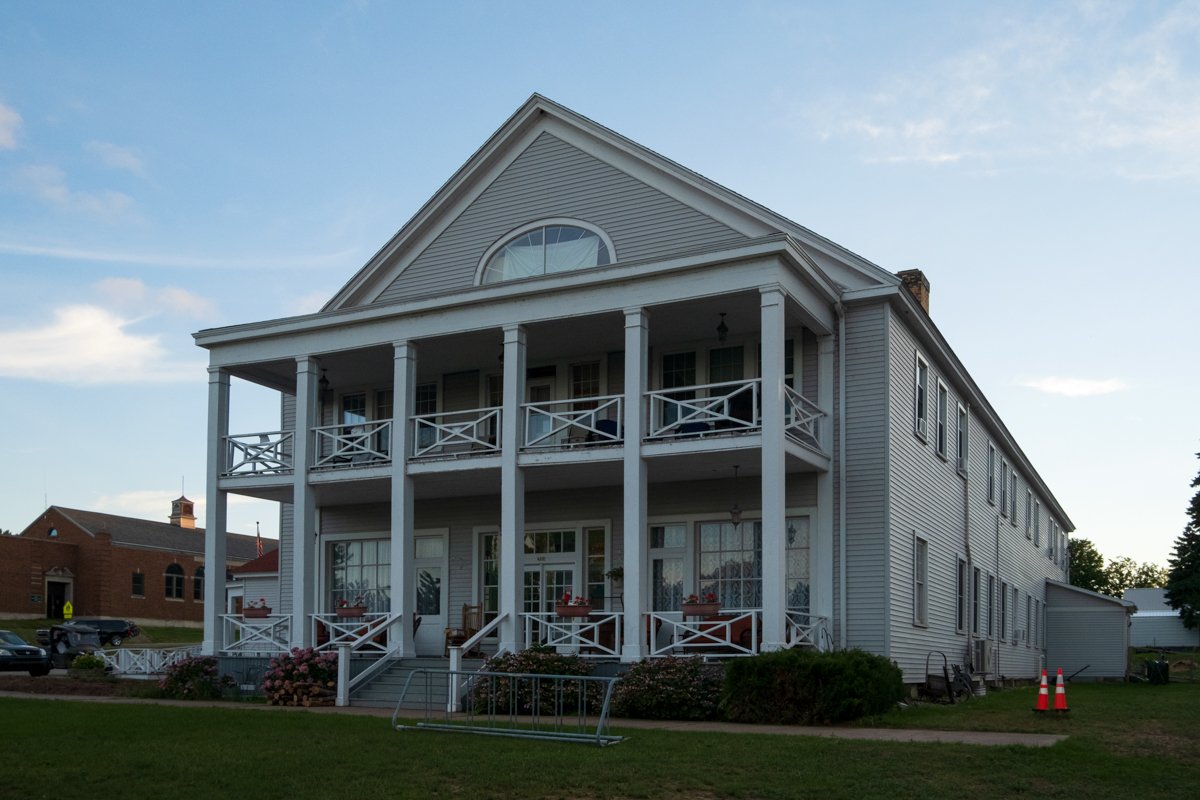

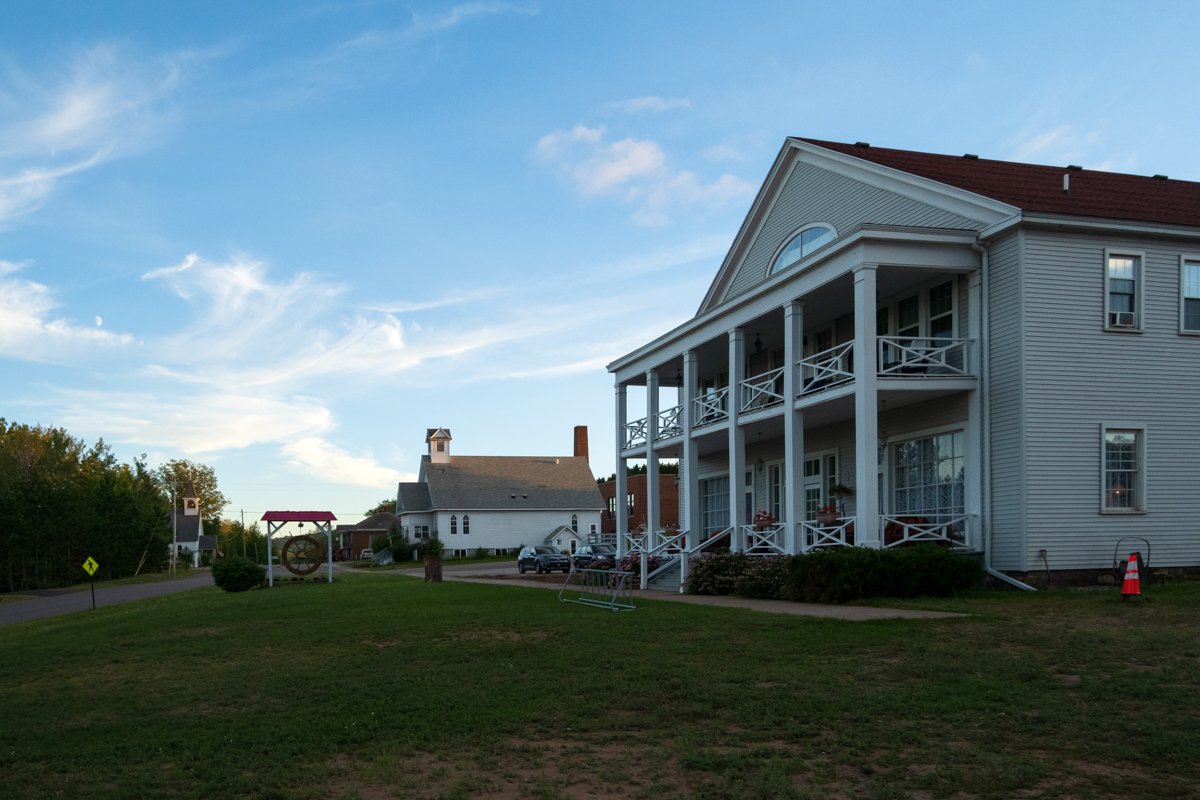
One of the most famous buildings that Ford purchased was what we now know as the Thunder Bay Inn. Initially built in 1909 as a company store for one of the local logging companies, Henry Ford transformed the property into a place for him and his executives to enjoy everything that Big Bay had to offer.
Unfortunately, Ford’s stay in Big Bay wouldn’t last long. The mill would shut down in 1947, and the property and land would be sold off after a cerebral hemorrhage caused Henry Ford’s death. Although the company was only around for roughly four years, it played a crucial role in Big Bay’s history.
Just as Ford’s executives enjoyed vacationing in Big Bay, the common person found interest here too. Cars were becoming more affordable thanks to Ford’s assembly line; by the 1950s, most families had at least one car. In addition to giving people the means to get to Big Bay for vacation, the rise of the middle class after World War Two made family vacations more popular. Big Bay became a destination for hunters, fisherpeople, hikers, snowmobilers, and adventurers. Generations of Michiganders have spent their summers here, and the advent of the internet has enabled folks with no ties to the town to discover everything the surrounding area has to offer. If you want to get away, you’ve always been able to do that in Big Bay.
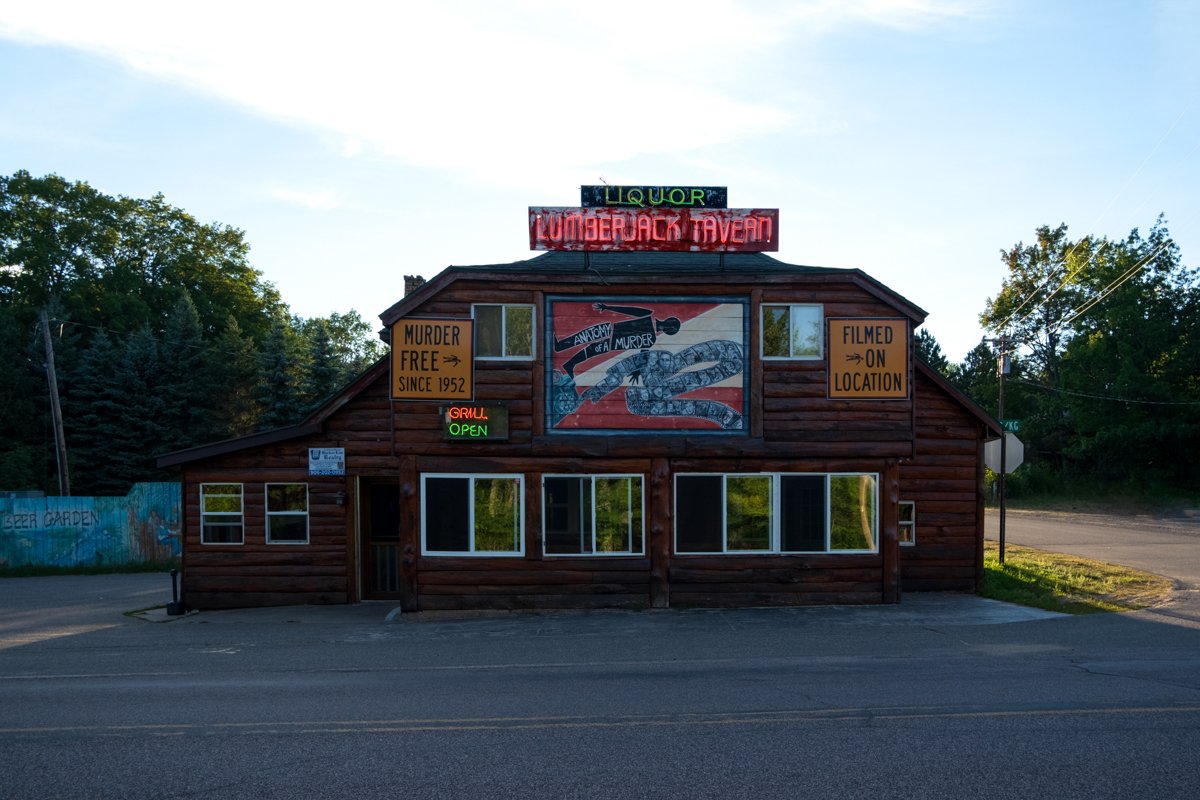
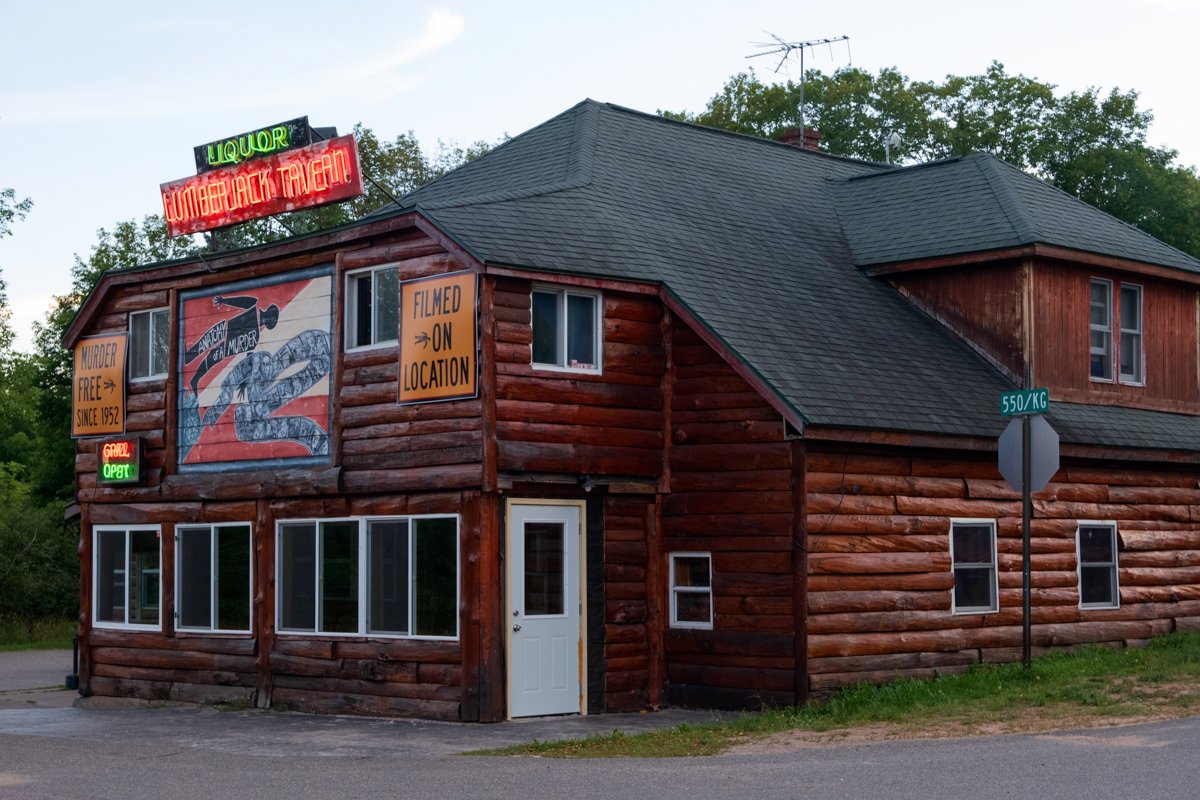
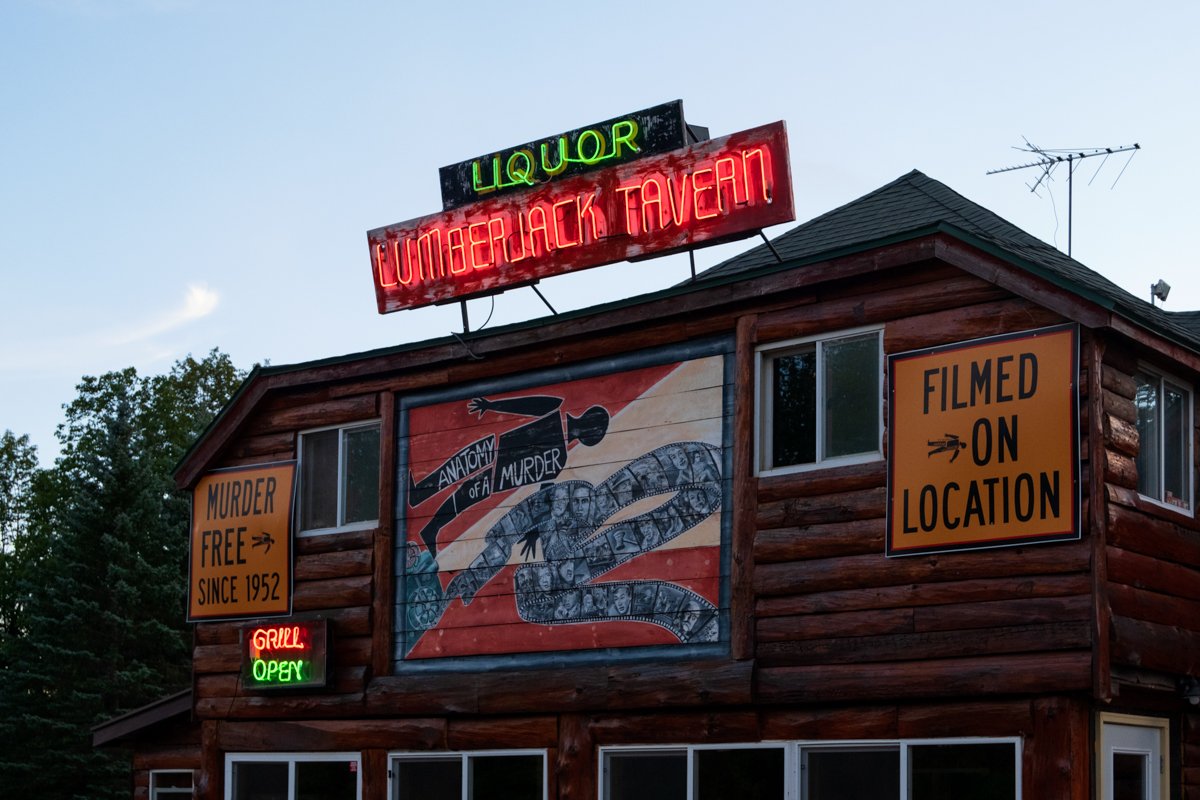
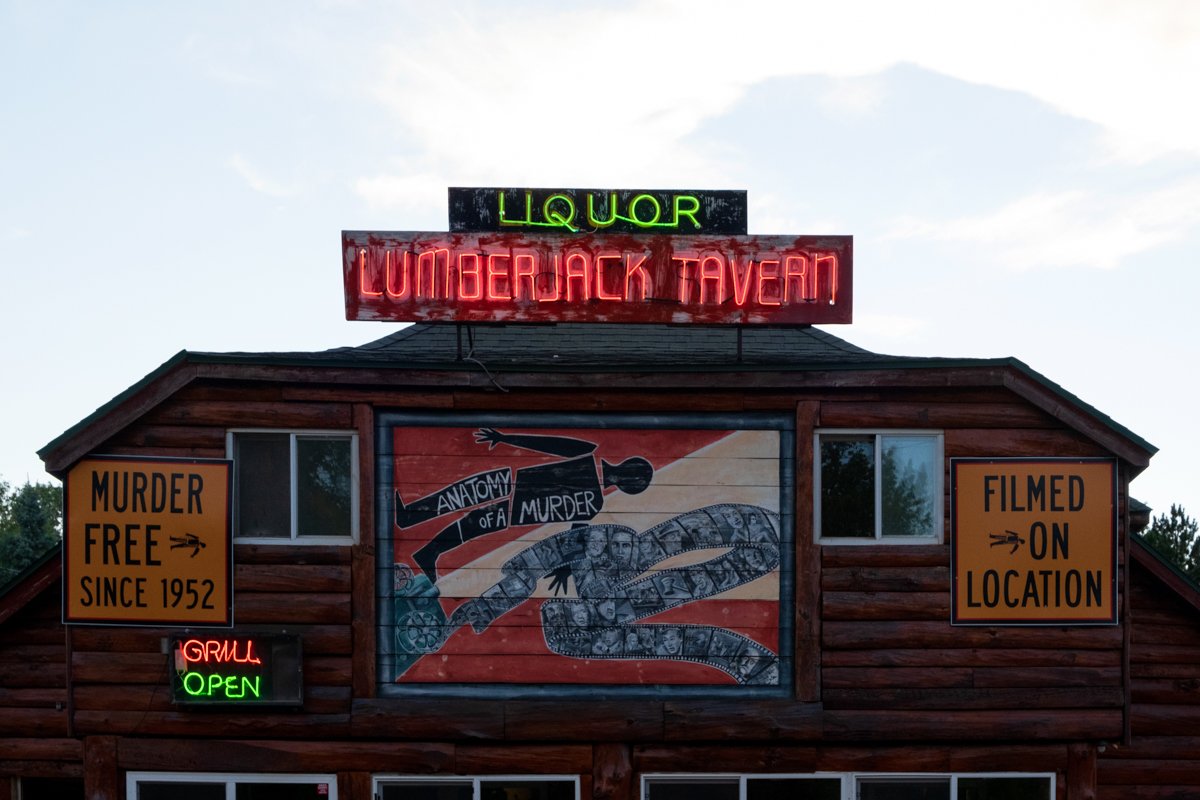
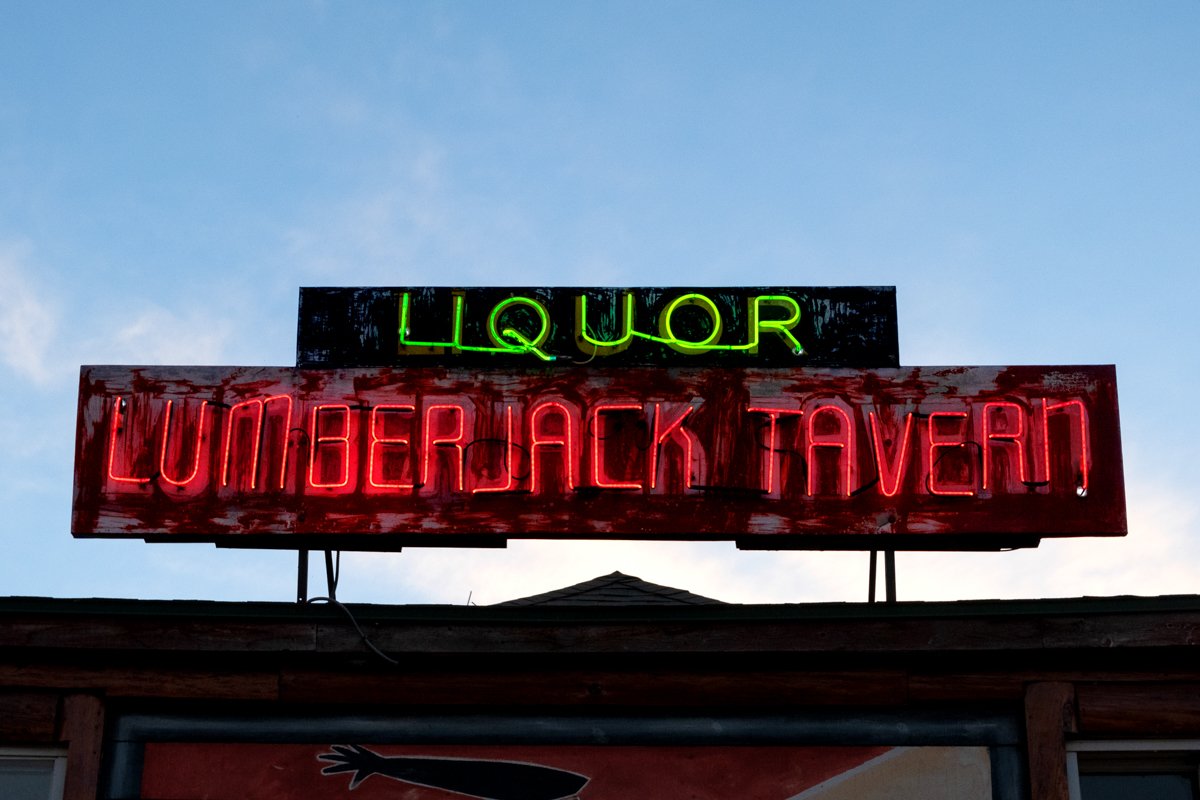
Even with the colorful history and awestriking natural beauty surrounding Big Bay, most people are aware of its existence for a worse reason. In July of 1952, Coleman Peterson, a First Lieutenant in the United States Army, shot former policeman Mike Chenoweth in the bar he owned, The Lumberjack Tavern. Despite initially believing Peterson committed the act in cold blood, a jury would later find him not guilty due to his temporary insanity. Peterson’s story was that his wife, Charlotte, had been taken to the woods and sexually assaulted by Chenoweth. When Peterson returned home and learned what had happened, he stormed to the bar and shot Chenoweth five times. The state found that this insanity was only temporary, and now that the event was over, Peterson was free to go about his business. The rumor was that he left town in the middle of the night without paying his lawyer, John Voelker.
Voelker wrote a piece of fiction based on the story—a 1958 novel entitled Anatomy of a Murder. A year later, a film based on the novel was released by Columbia Pictures. It was directed and produced by Otto Preminger, featured performances from James Stewart, Lee Remick, and Ben Gazzara, was nominated for seven Academy Awards, and won three Grammy awards for its soundtrack composed by Duke Ellington. Voelker, who went by the pen name Robert Traver, was the Marquette County Prosecutor and a Michigan Supreme Court Justice.
The Lumberjack Tavern is still open today and leans heavily into the dark history of the building. Its walls are clad with memorabilia from the film and actual murder that took place here—but it isn’t too kitschy. The fact it remains open is a testament to the hard-nosed nature of the Upper Peninsula and its people—and it’s one of the more popular landmarks in Big Bay.
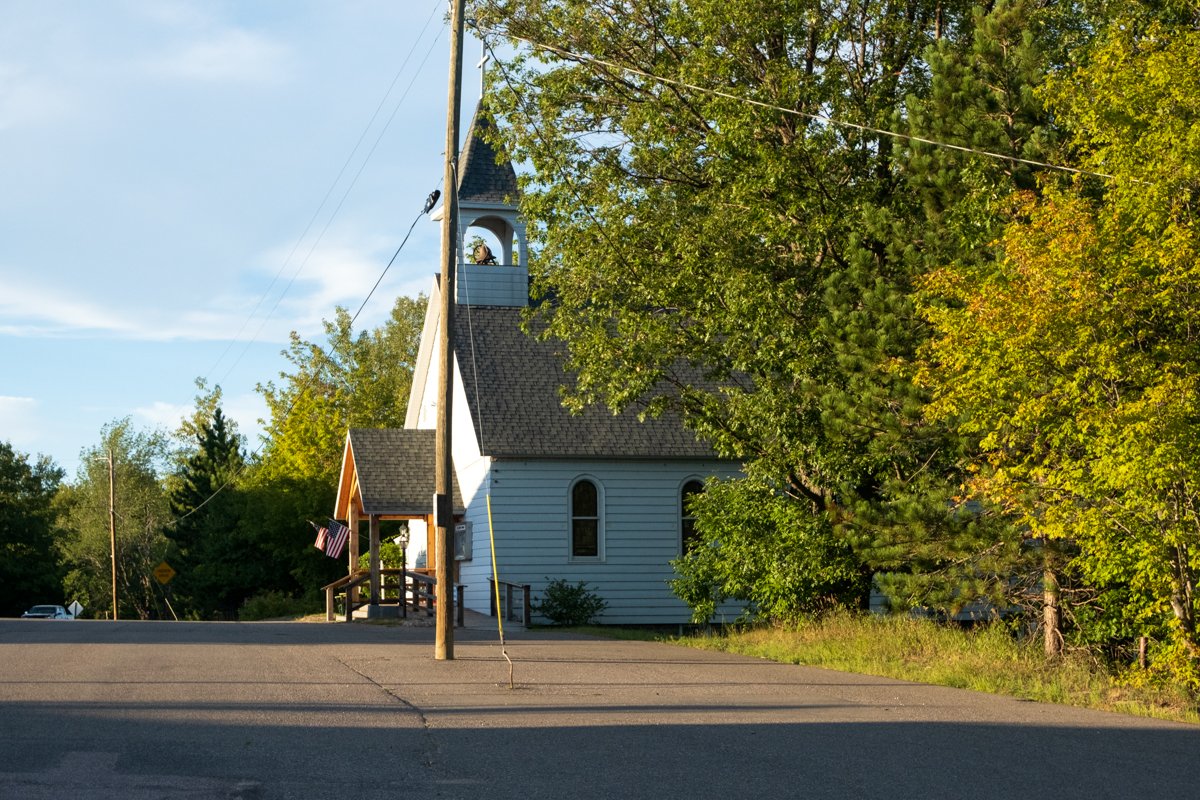
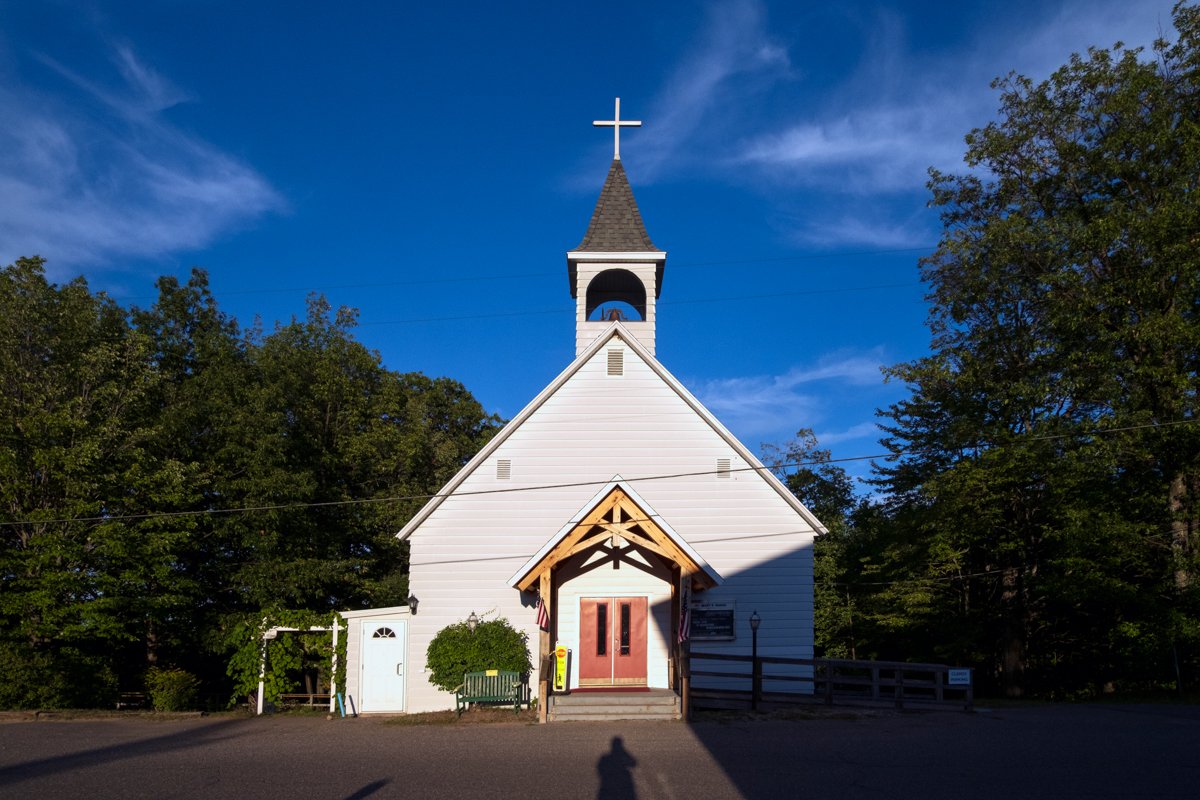
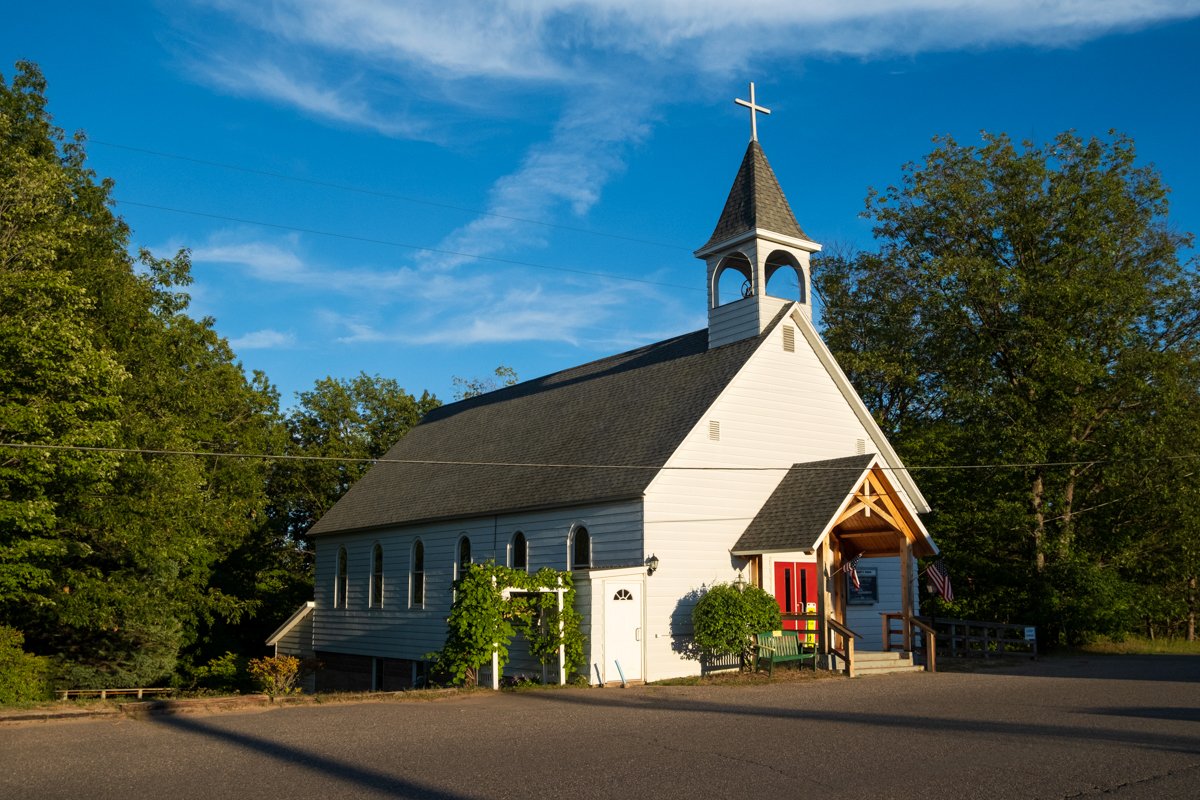
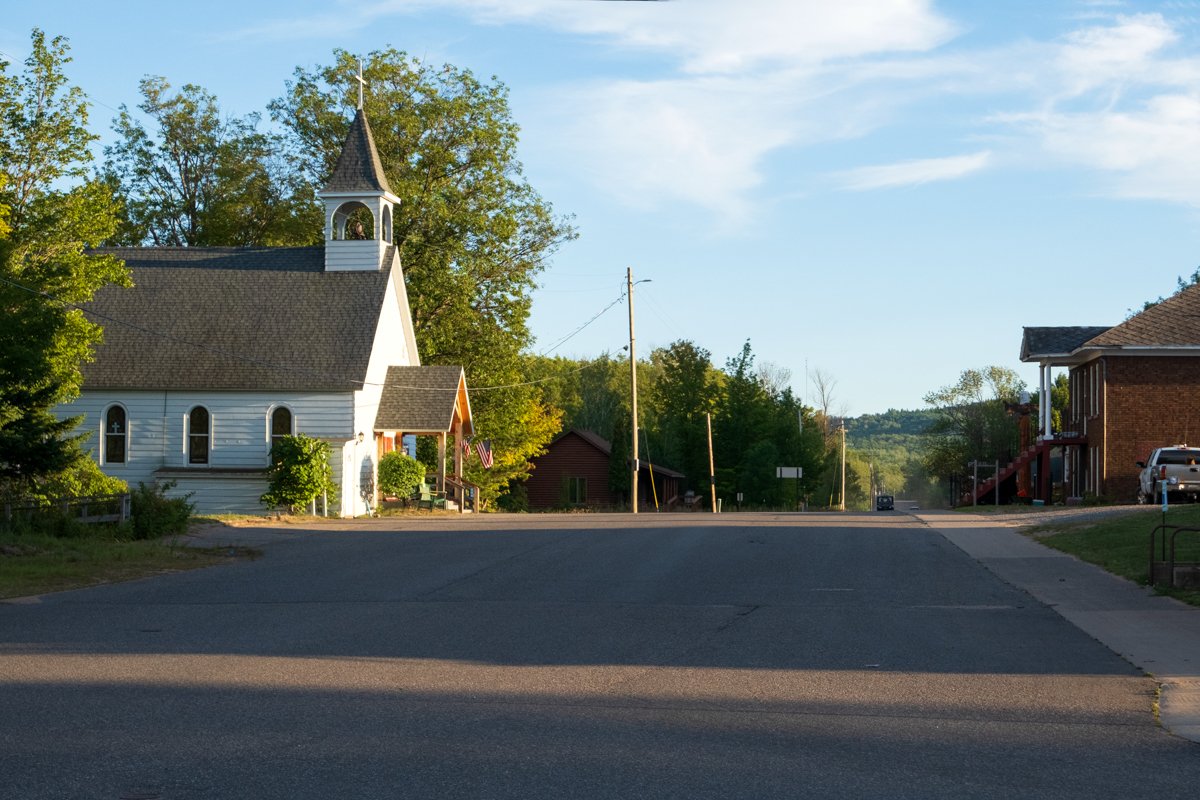
St. Mary’s Catholic Church was founded in Big Bay in 1906. The church is located kitty-corner to the Presbyterian Church, and Lake Independence is directly behind it. The church has a nice side-lot to the north that they maintain which is quite lovely. We haven’t been able to dig up much history on the parish, but it celebrated its 100th anniversary in 2006 and still has weekly masses for locals and visitors. St. Mary’s is a part of the Diocese of Marquette, which covers the entire Upper Peninsula of Michigan.
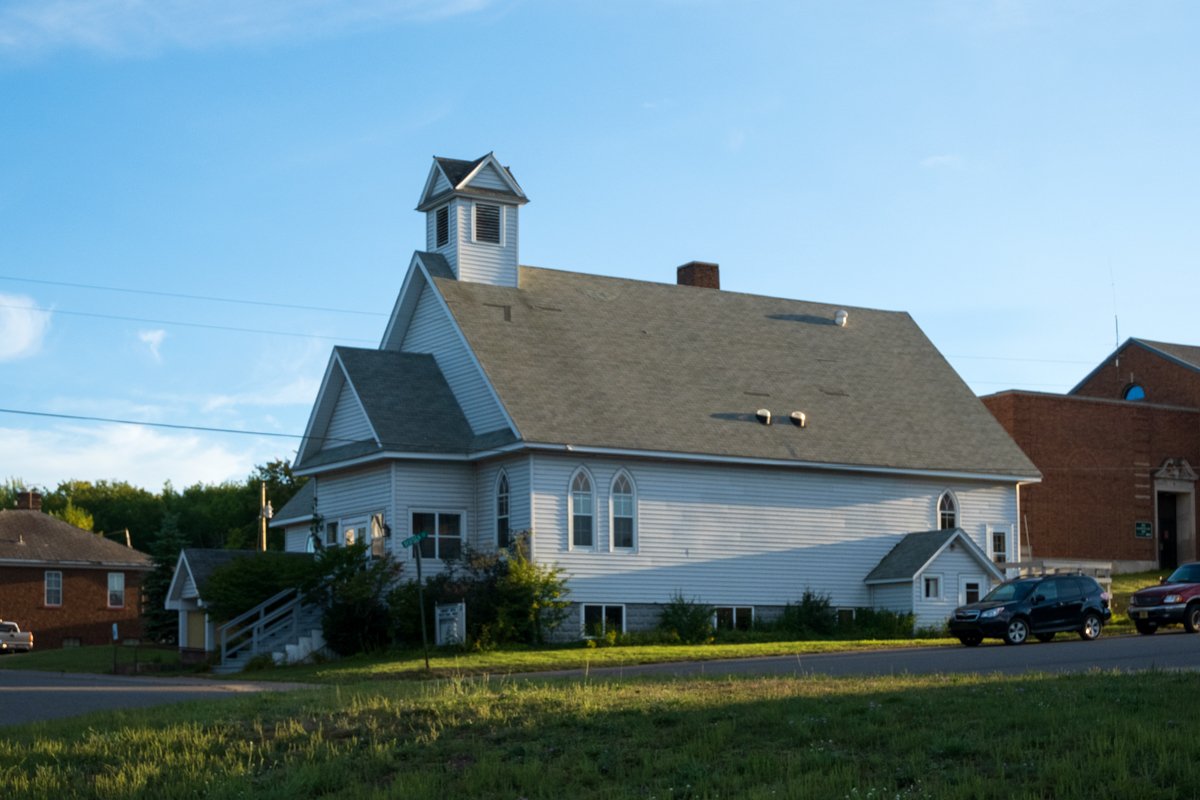

A group of residents came together in the 1920s intending to build Big Bay a Presbyterian church. By 1931 their work was bearing fruit, as construction was underway. The process was tedious, but it was finished by the mid-1930s. Community Presbyterian Church of Big Bay became a place of worship for residents and those visiting from afar. All the money owed on the building was paid off by the 1950s, and minor upgrades were completed over the next few decades. The church was completely redeveloped in the early 2000s, adding more seating. Summer masses had become crowded due to the number of part-time residents who were only in the area for warmer temperatures. The construction was finished by June 2004, when the new building was dedicated.
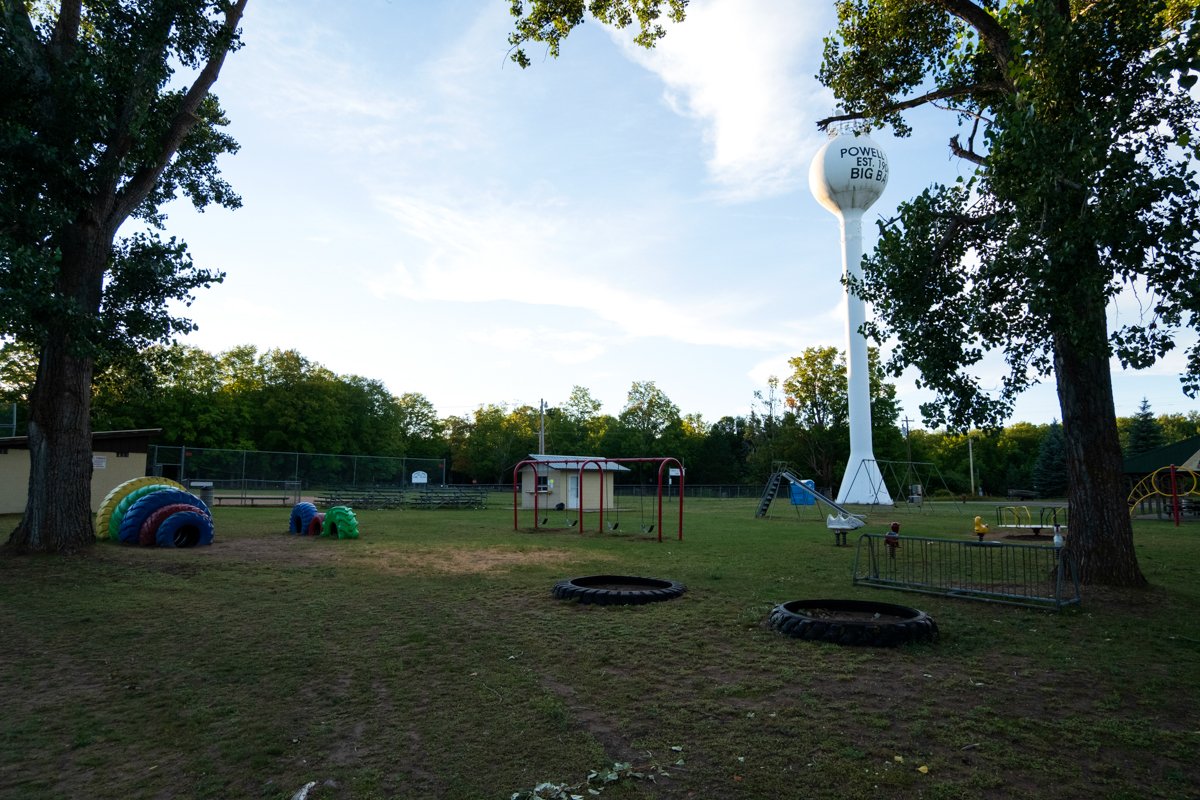
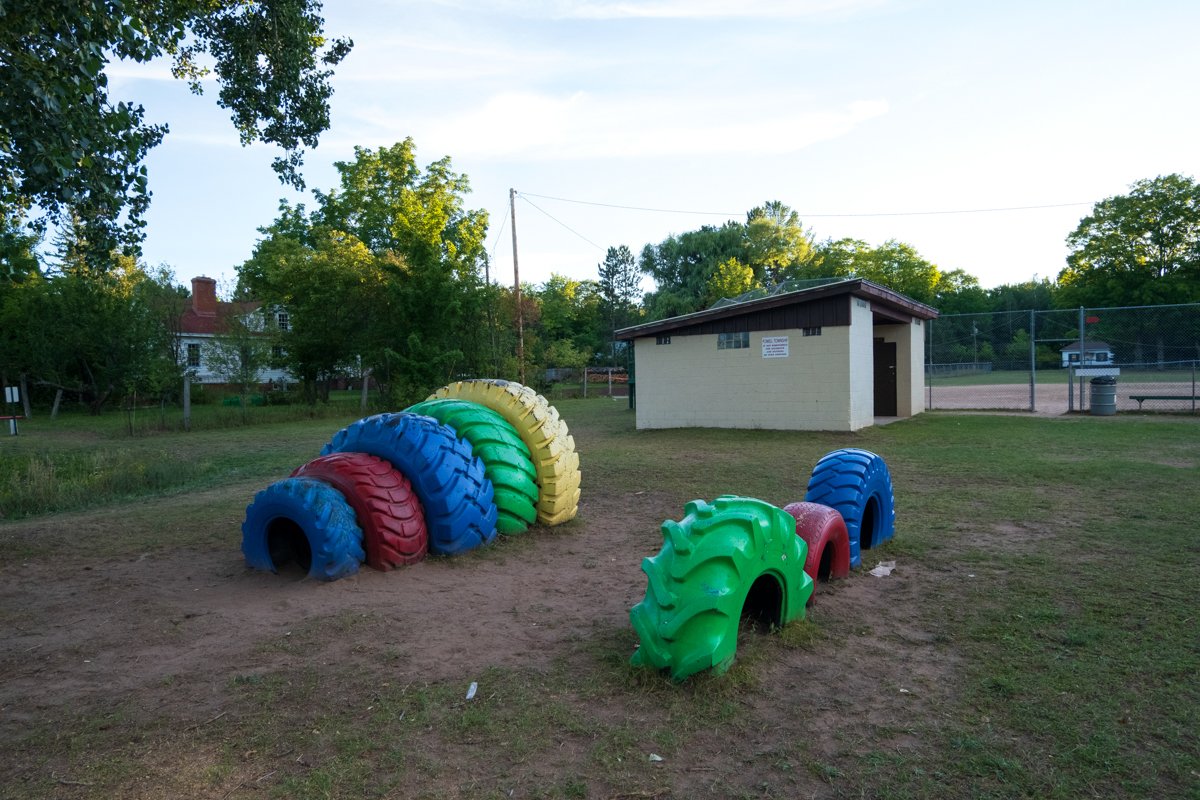
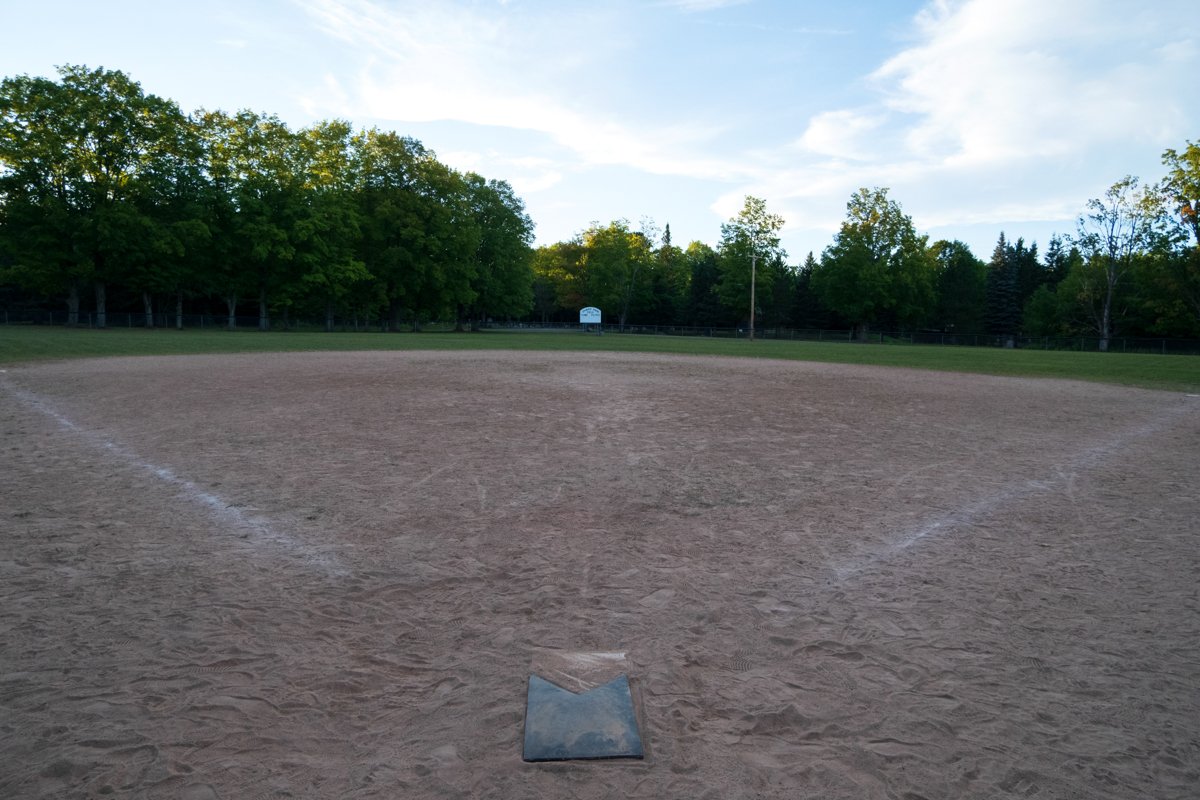
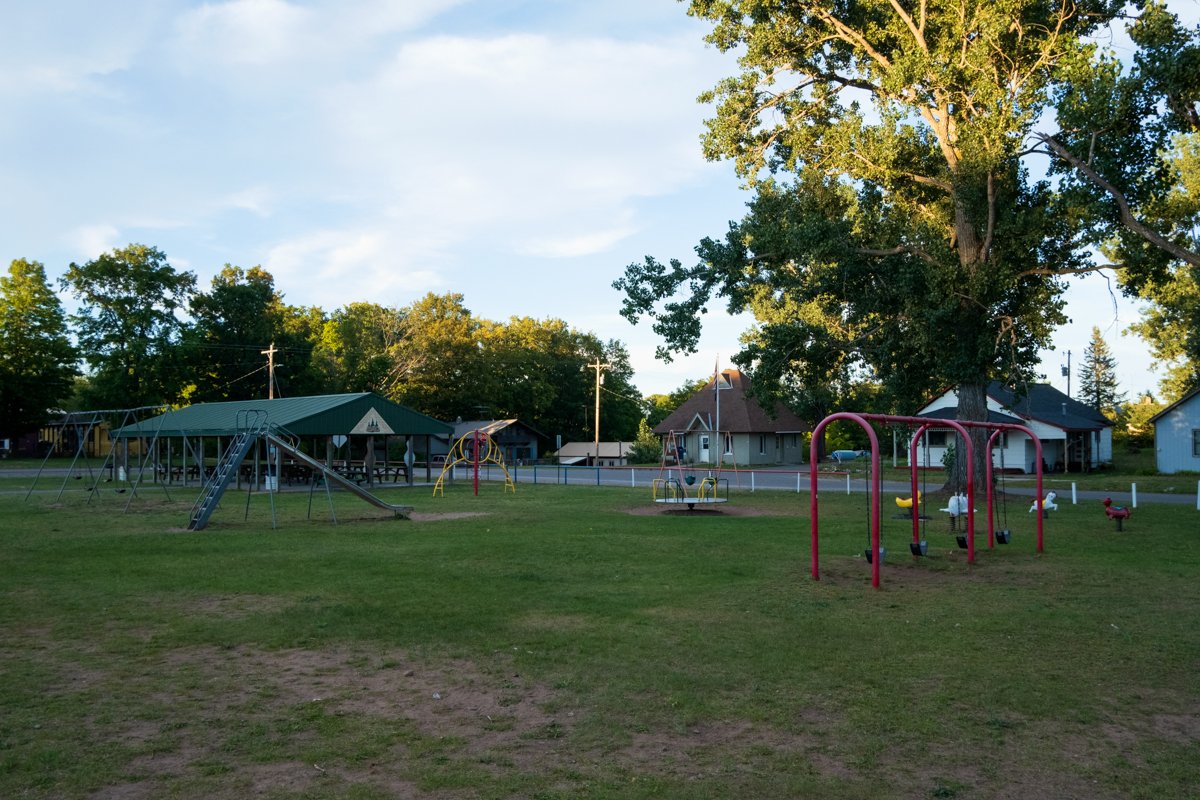
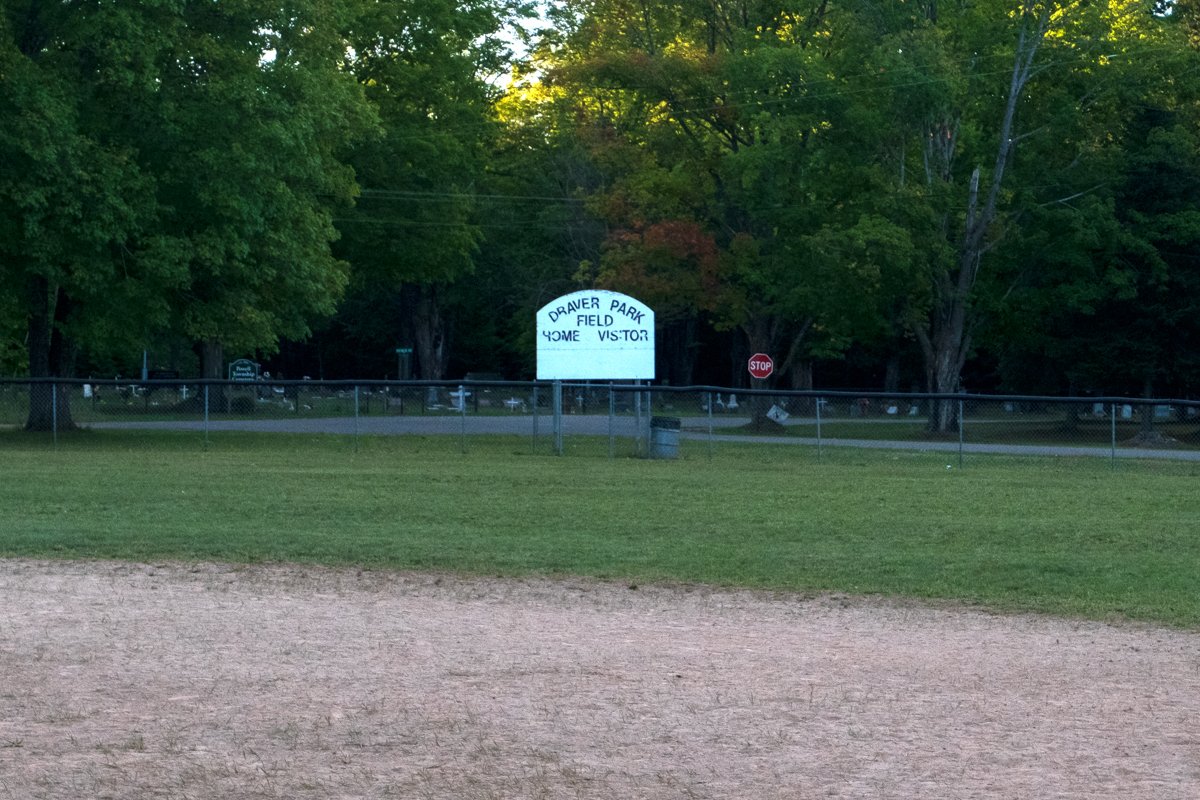
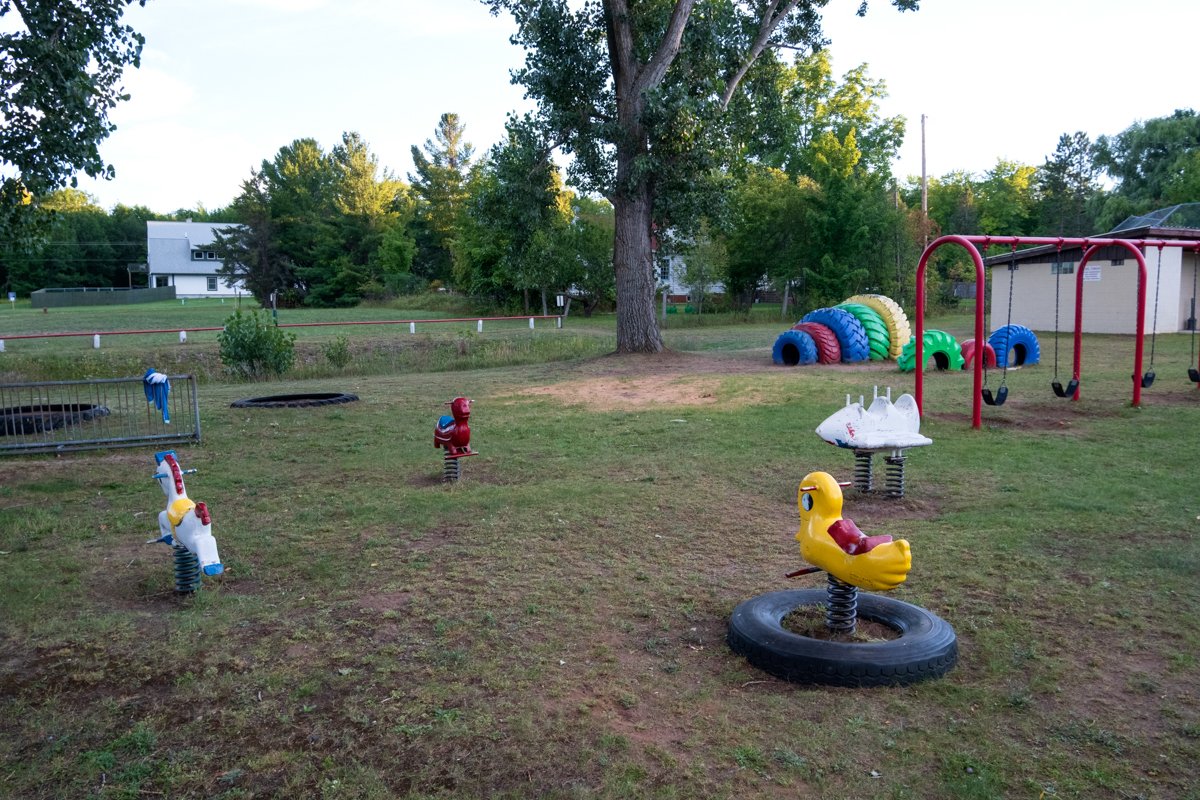
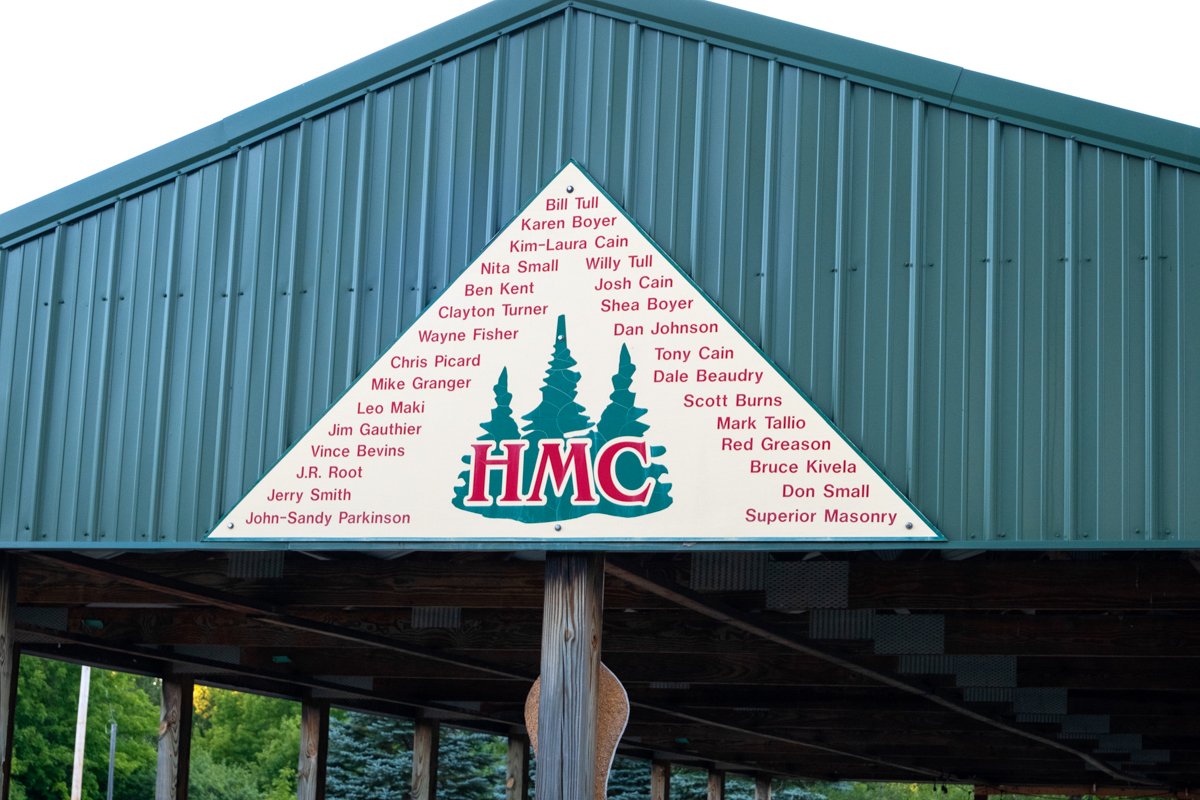
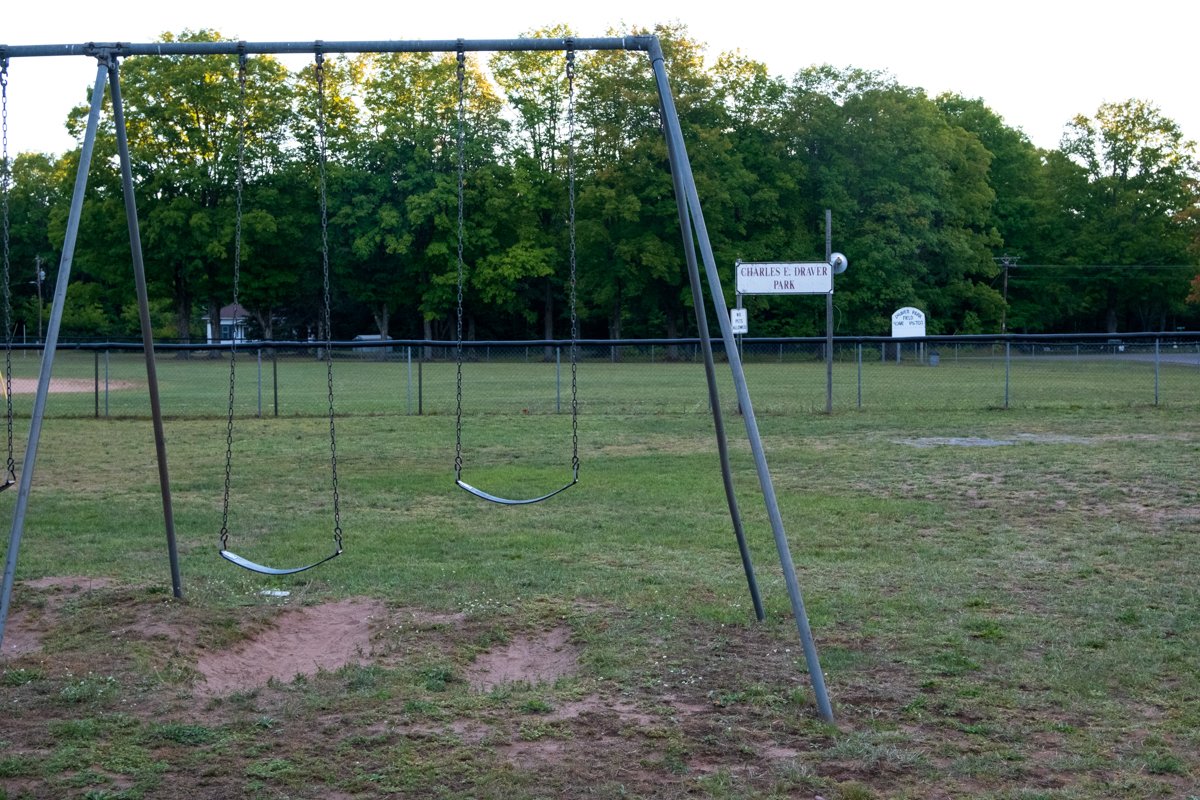
Draver Park is located right in the heart of Big Bay. It’s a place for local kids to play and hosts several events every year. The southeastern side of the park is dedicated to play equipment, which is a bit old, but fun for kids of all ages. The northeastern portion is home to the pavilion, which the Huron Mountain Club sponsored. The western half of the park is home to the softball diamond that appears well-used. There’s also a food stand, but it wasn’t open upon our visit. The entire park is worth visiting if you have little ones or are looking to relax for a while. There’s live music here in the warmer months, and signs are typically posted around town with the dates and bands that will be playing. There’s a public restroom in the park—however, if that isn’t open, there’s a portapotty too. We think the park and field are named after Big Bay Brunswick Baseball’s second baseman and pitcher, Charles Draver, but we aren’t completely sure.
Today, Big Bay is a quaint unincorporated community surrounded by natural beauty. From the shores of Lake Superior to the crashing falls of the Alder Creek and Yellow Dog River, there’s more to see here than meets the eye or you’ll find on a map. The best way to learn about the town is to be there, and if you aren’t able to do that, we hope this brief historical summary helps depict the people who have called Big Bay home for generations.
To plan your trip across Michigan, check out our interactive map. If you’re interested in learning more about the Upper Peninsula’s history, check out our list, Books For Your Next Trip to Michigan’s Upper Peninsula. Last but not least, be sure to subscribe to our channel on YouTube!
If you have a suggestion for a town for us to cover, contact us here. Until next time, enjoy the trip!

